

How to Plan a Trip to Bhutan — Your Complete Guide
Bhutan visas and travel restrictions.
- Best Time to Visit Bhutan
- Top Places to Visit in Bhutan
- How Long to Stay in Bhutan
- Cost of Bhutan Tour
- How to Travel Around Bhutan
A trip to Bhutan is an exciting adventure that invariably includes incredible views of the Himalayas, diverse national parks, and incredible religious and historical sites.
Bhutan is not only a joy to explore because of what you can see, but it is also incredible because of what you can experience. Enjoy the country's famous low-impact tourism, abundance of cultural experiences like festivals and celebrations, and gorgeous mountain forts and monasteries.
Most people traveling to Bhutan (except for nationals of India, Bangladesh, and the Maldives) need a tourist visa.
Visas must be applied for through a travel agency, and all travelers are required to visit Bhutan with a guide. Visas are approved by the Tourism Council of Bhutan once the full payment for their trip has been received by the travel agency.
Best Times to Visit Bhutan
Bhutan has four distinct seasons, but each of them has relatively pleasant weather conditions and temperatures making it a great year-round destination.
Autumn (September to November) and Spring (March to May) are often said to be the best times to visit Bhutan, because they have the driest and most pleasant weather. And there will be more travelers during this time.
Summer (May to August) is the monsoon season, but Bhutan doesn't get as much rain as most other South Asian countries. Days are warm at above 30°C (86°F), and humid. The summer rains often happen at night, which means they don't affect daytime travel activities too much.
Winter (December to February) is cold in most areas of the country, but offers travelers the chance to explore Bhutan without so many other travelers around.
Discover real reviews of Highlights Travel Family 's best-rated service across trusted platforms.
Best Places to Visit in Bhutan
Most people who visit Bhutan will explore Thimphu, Punakha, and Paro. Travelers can choose to either start in Thimphu or Paro. Travelers who have more days to spend in Bhutan can consider visiting other areas, such as Jigme Dorji National Park or the Himalayas.
1. Thimphu — the Capital: History, Cultural Relics
Thimphu is the largest city in Bhutan and is located in the country's central valley. It is famous as a city that has both modern architecture and ancient customs. Thimphu is a great starting point when visiting Bhutan, as there you can see modern Bhutan and also explore some of the city's religious and cultural sites.
It is a great view to look down over the Thimphu Valley when you are visiting The Giant Buddha Dordenma, which stands at 54 meters (177 feet) tall. Not only is this one of the largest Buddha statues in the world, but it is also typically not too crowded, making for a more authentic and spiritual experience.
While in Thimphu, guests can learn more about its local culture at its Folk Heritage Museum, explore the 13th-century royal fortress of Tashicho Dzong, or take in the beautiful golden spire of the Memorial Chorten.
2. Punakha — Himalayan Views, Buddhist Temples, Dzongs
Punakha is one of the most impressive cities in Bhutan and is often a favorite among travelers for its stunning scenery and abundance of religious sites.
In Punakha, travelers should also explore the Punakha Dzong, the main government building of the city that sits between the area's two major rivers (Mo and Po, or mother and father). Climb up to the top of the temple of the Khamsum Yulley Namgyal Chorten to get a great view of the entire valley. Also make sure not to miss the Punakha Suspension Bridge, which offers gorgeous views of the river below.
If you have more time, you can try other outdoor activities in Punakha, including whitewater rafting, bird watching in a national park, and trekking.
3. Paro — Dzongs, Museums, Tiger's Nest Monastery
Paro is the summer capital of Bhutan — a small and quaint city that is full of sacred sites and historical buildings.
Paro is particularly famous for Tiger's Nest Monastery, which is only about 11 km (7 miles) from the city. Tiger's Nest Monastery is one of the major highlights of a trip to Bhutan and famously sits right on the edge of a large cliff offering stunning views of the surrounding area.
While in Paro, travelers can also explore the National Museum and Rinpung Dzong, which is not only a monastery but also a government fortress. Spend time deep in the Himalayas by driving across the Chele La Pass, which is the highest mountain road in the country reaching 3,810 meters (13,000 feet) above sea level.
4. Jigme Dorji National Park — Wildlife, Landscapes
Jigme Dorji National Park is the largest protected area in all of Bhutan and contains diverse landscapes and wildlife. The altitude of this park ranges from the lowlands at 1,000 meters (3,300 feet) above sea level to snowy mountain peaks climbing to 7,000 meters (23,000 feet) above sea level.
This park is home to many sacred mountains, such as Jomolhari, Tsherimgang, and Jichu Drake and animals such as snow leopards, Bengal tigers, black bears, sheep, and red pandas.
There you can take wildlife safaris, trek through the meadows to see blue poppies and edelweiss, visit high elevation forts like Gasa Tashi Tongmon Dzong, or just take in the views of the sacred mountains.
How Long to Stay in Bhutan: Sample Itineraries
If you are considering a Bhutan itinerary, we suggest you spend at least 5 days to visit the highlights of this country, including the major monasteries, dzongs, and national parks in Thimphu, Punakha, and Paro. The following is a classic 5-day tour itinerary:
Days 1–2 (Thimphu): Visit Tashichho Dzong (headquarters of the central government), and Folk Heritage Museum to discover the Bhutanese folk heritage and rural history. On day 2, visit the National Library of Bhutan and the Bhutan Post Office Headquarters, where you can make stamps with your own photos and put them on postcards for your family and friends.
Day 3 (Punakha): Visit Simtokha Dzong and Dochula Pass. At Dochula Pass, you can have a stunning 360-degree panoramic view of the Himalayan mountain range. In the afternoon, explore Punakha Dzong, which is the most beautiful dzong in Bhutan.
Days 4–5 (Paro): Visit Paro Dzong and Ta Dzong, which houses the National Museum of Bhutan. The museum has a fascinating collection of arts and relics including religious thangka paintings. Then, take an excursion to Tiger's Nest Monastery, which is one of the most famous monasteries in Bhutan.
Top South Asia Tour Itineraries Including Bhutan
Most our clients prefer to include Bhutan in their 2-to-3-week South Asia trips. The most popular tour itineraries usually include India, Nepal, and Bhutan. Get some inspiration from our 14-Day India, Nepal, and Bhutan Tour .
The above suggested itineraries are just to give you an idea of what is possible and popular. You are welcomed to contact your own experienced 1:1 tour consultant for a tailor-made itinerary that perfectly fits your interests, travel time, budget, and other requirements.
Travel Costs for Bhutan
The cost of travel in Bhutan is much more expensive than other Southeast Asian countries. Because the government requires that all incoming travelers must book a tour with a travel agency and set a minimum daily cost of US$200 per person during low season and US$250 during high season. General speaking, if you are planning for a comfortable trip (mid-range hotel) in the top destinations in Bhutan, it will cost US$250–350 per day per person.
How to Get To and Around Bhutan
Getting to bhutan and connecting to other asian countries.
The best way to travel to Bhutan is by air, landing at the country's only international airport in Paro. There are no direct flights from other continents except Asia. Travelers from America and Europe are recommended to book a 1-stop flight to Paro, stopping at Bangkok, Kathmandu, or New Delhi.
There are international flights to Paro by Drukair and Bhutan Airlines that come from Bangkok in Thailand, Kathmandu in Nepal, New Delhi and Kolkata in India, Yangon in Myanmar, and Singapore. Most of our clients choose to include their Bhutan journey in a South Asia trip covering other countries like Nepal or India.
Getting Around in Bhutan
Because all visitors to Bhutan must visit through a travel agency, the only way to travel around Bhutan is with a travel-agency-supplied private car and driver. The price of your private car will be included in the cost of your tour making it a convenient and affordable way to get from one place to another.
When traveling by private car, guests have the ability to have a flexible schedule and choose when they want to leave or stop along the journey.
Traveling to Bhutan with Asia Highlights
Bhutan is a truly unique destination — the trip of a lifetime for many, full of exciting cultural experiences, great food, and incredible mountain views.
Would you like a flexible and world-class travel agency to arrange your Bhutan travels? At Asia Highlights, we specialize in creating tailor-made trips that suit the individual preferences of our clients.
Get Inspired with Some Popular Itineraries
At Asia Highlights, we create your kind of journey — your dates, your destinations, at your pace. You can have any trip tailor made for your travel.
More Travel Ideas and Inspiration
Sign up to our newsletter.
Be the first to receive exciting updates, exclusive promotions, and valuable travel tips from our team of experts.
Why Asia Highlights
Where can we take you today.
- Middle East
- African Safari
- Travel Agents
- Loyalty Program
- Privacy Policy
Address: Building 6, Chuangyi Business Park, 70 Qilidian Road, Guilin, Guangxi, 541004, China
7 Days In Bhutan Travel Itinerary: Best Things To Do & See
Bhutan is a wonderful, secluded little country in the Himalayas. It’s definitely not the easiest country to visit, but it’s worth the effort if you’re looking for a really unique travel experience. I spent one week in Bhutan recently and enjoyed every moment.
Most people spend 5 to 7 days in Bhutan, and an itinerary like that gives you enough time to see many of the top highlights of the country, although you’ll still probably be sad to leave.
Bhutan is full of interesting culture and nature, and yet it’s pretty unspoiled by tourism. Even places that would normally be very crowded and touristy, like the Tiger’s Nest Monastery , still feel refreshingly authentic and personal.
In this travel blog, I’ll share my ideal Bhutan itinerary and some of the best things to do if you have one week in the country! This is basically the same itinerary I used in Bhutan, with a few improvements based on my experience.
Table of Contents show 1) Best Bhutan Tour Company 2) Bhutan Itinerary Day 1: Paro Acclimatization 3) Bhutan Itinerary Day 2: Thimphu 4) Bhutan Itinerary Day 3: Gangtey Valley 5) Bhutan Itinerary Day 4: Punakha & Wangdue 6) Bhutan Itinerary Day 5: Revisiting Thimphu 7) Bhutan Itinerary Day 6: Tiger’s Nest Monastery 8) Bhutan Itinerary Day 7: Paro Farewell 9) 5 Days In Bhutan Itinerary 10) More Bhutan Travel Tips

The Tiger’s Nest Monastery hike was one of my favorite experiences in Bhutan
Best Bhutan Tour Company
For most nationalities, the only way you can visit Bhutan is with a visa and tour organized by a local Bhutanese tour company. There’s also a daily tax of $100 USD per person, which is a rule established by the Bhutanese government to try to ensure ‘quality over quantity’ tourism.
I visited Bhutan with this tour company on GetYourGuide. It was a great experience, and I would happily recommend them to anyone! The owner of the company, Tsenrig, helped me craft the perfect 7-day Bhutan itinerary, with a visit to the Tiger’s Nest Monastery and lots of other great sights around the country of Bhutan.
Their most popular itineraries are 5 or 7 days , but they also have tours of 9 or 10 days , or even as long as 15 or 20 days. The itinerary is very flexible and you can choose the sights you most want to see on each day you spend in the country of Bhutan.
My private tour guide, L. Dorji, was fantastic and very helpful, staying at my side every step of the way. He even kindly insisted to carry my heavy backpack for me, and helped me swap between my camera lenses whenever I was taking pictures.
Dorji knew every detail about the history of Bhutan, and he’s been giving tours for decades. He was one of the best tour guides I’ve had anywhere in the world. Overall, I would highly recommend this company for your travel to Bhutan!
Book Now: Bhutan Tour 5 / 7 / 9 Days
Bhutan Itinerary Day 1: Paro Acclimatization
Welcome to Bhutan! You’ll probably be tired after your flight to Paro. Start your itinerary with a low key visit to Ta Dzong, located just a 20 minute drive from the airport.
This odd looking cylindrical building is a 17th century watch tower that now serves as the national museum of Bhutan. Inside, there are Bhutanese paintings, statues, weapons, and other artifacts.
For me, the best part was seeing the outside and the view of the valley below.

Ta Dzong — the national museum of Bhutan
• Paro Dzong
For most tourists, the Paro Dzong will be your first real experience with a Bhutanese fortress-monastery (called a ‘dzong’). These are kind of like the castles of Bhutan.
Also known as the Rinpung Dzong, this is the main fortress and monastery in Paro town, and it was built in the 17th century overlooking the river and valley. The name basically means “fortress of the heap of jewels.”
The outside walls are impressive, and so is the inside of the courtyard. Don’t miss the giant bee hives hanging from the windows!
You can walk through this fortress in just 30 minutes or so, but it’s well worth a visit! The best photo spot is on the path leading to it.

The 17th century Rinpung Dzong in Paro
• Kyichu Lhakhang
Kyichu Lhakhang is a small Buddhist temple that dates back to the 7th century, making it one of the oldest temples in Bhutan.
This one is just a 10 minute drive north of Paro town, so it’s easy to visit even if you’re short on time.
• Archery Match
Archery has been the national game of Bhutan since 1971, and the locals are always practicing their skills with a bow and arrow. It’s fun to watch an archery match and some of these guys are really skilled.
I decided to skip this since I was exhausted and wanted to save energy for other things, but I still got to witness some archery matches from a distance later on when we were driving around the countryside of Bhutan.
You’ll have plenty of opportunities to see archery while you’re traveling in Bhutan.
• Paro Town
If you still have energy, you can spend the rest of the day roaming around Paro town and shopping for souvenirs. There are lots of shops on the main street and they have a good selection of Bhutanese crafts, plus the usual shirts and fridge magnets, and other items for sale.
• Overnight In Paro
Stay overnight in Paro, which has an altitude of about 2,200 meters (7,200 ft). I stayed at Hotel Olathang, which is a historic 3-star hotel on a hill, surrounded by pine forests and overlooking the Paro valley. It was a little dated, but the location is nice.
Bhutan Itinerary Day 2: Thimphu
• drive to thimphu.
After breakfast, you’ll drive to Thimphu, the capital city of Bhutan. Even though the distance from Paro to Thimphu is only 45 kilometers, the drive takes 60-90 minutes because of the winding mountain roads.
Along the way, you’ll pass another monastery across the river called Tachog Lhakhang, as well as an old iron suspension bridge. Your guide can make a quick stop to let you take some photos of it before continuing to Thimphu.
• Taschichho Dzong
The Tashichho Dzong is a giant fortress-monastery that also serves as the seat of the government in Thimphu.
I was lucky to visit Bhutan during the annual Tshechu festival, which is usually held in Thimphu in late September or early October, so I was able to watch the mask dance here, together with thousands of locals wearing their colorful national clothes.
It was pretty fascinating, and I consider it one of the highlights of my trip to Bhutan!

Thousands of locals gathered at Tashichho Dzong for the annual Tshechu festival

Mask dance at the Tshechu festival
• Cheri Monastery
The Cheri monastery hike is a nice little excursion into the forest near Thimphu, where you can see some wildlife and a 17th century monastery on the hillside.
This hike takes about 45-60 minutes going up, depending on your pace, and a bit less going down. Most of it is uphill, but it’s not as hard as the famous Tiger’s Nest hike , so most people won’t have any problem with it.
We saw birds, mountain goats, and langur monkeys here. My guide told me you could sometimes hear tigers roaring in the distance during the 1980s, and they still occasionally see Himalayan black bears in this area since it’s on the edge of the Jigme Dorji National Park.

Cheri Monastery requires a bit of hiking

We saw grey langur monkeys near the monastery
• Overnight In Thimphu
Stay overnight in Thimphu, which has an altitude of about 2,300 meters (7,500 ft). I stayed at a 3-star hotel called Kisa Villa, which has a garden and close up views of the Taschichho Dzong. You can even see the dzong lit up at night.
Bhutan Itinerary Day 3: Gangtey Valley
• dochula pass & drukwangyel.
Day three begins with the drive from Thimphu to Phobjikha. This takes about 3 hours because of the usual zigzag roads of Bhutan, but there’s lots of great scenery to enjoy along the way.
After about 45 minutes of driving, you’ll stop at Dochula Pass, a high mountain pass with an altitude of 3,150 meters (10,335 feet). Morning is the best time to come here.
On a clear day, you can get some great views of the snow capped Himalayan mountains in the distance. One of these is Gangkhar Puensum, the highest mountain in Bhutan and the highest unclimbed mountain in the world!
There’s also a monastery at Dochula Pass with 108 stupas, which were built to commemorate 100 years of monarchy in Bhutan. The weather was cloudy when I went, but we were still able to catch some glimpses of the mountains in the distance.

Drukwangyel temple in the clouds
• Gangtey Monastery
After more driving, you’ll reach Phobjikha and visit the Gangtey Monastery, a colorful 17th century building that overlooks the valley.
When I visited, the place was packed with locals and they were practicing their dance moves for another upcoming festival.

Another festival at the Gangtey Monastery
• Kwewa Village Nature Trail
From the Gangtey monastery, there’s a nice little point-to-point nature trail that goes down the hill, through the forest, and across the valley of Phobjikha.
Most of this hike is mild and easy, but it takes about 1 hour or more to reach the end of the trail, where your driver will be waiting for you and your guide.
You can see horses in the valley, and black necked cranes also migrate here during the months of November to February.

Phobjikha valley
• Black Necked Crane Center
After seeing the Phobjikha valley, you have the option to visit an information center for the black necked cranes that tells more about the birds, and they also have telescopes for bird watching.
I decided to skip this and rest at the hotel, since the black necked cranes were out of season when I visited in September.
• Overnight In Phobjikha
Stay overnight in the Phobjikha valley, which has an altitude of about 3,000 meters (9,800 ft). This is the highest place you’ll stay in this Bhutan itinerary.
I was expecting the hotel here to be a little rough since it’s a more remote location, but actually it was very comfortable. I stayed at the 3-star Gakiling Guest House, which had nice views of the valley, fast WiFi, good food, and friendly staff.
Bhutan Itinerary Day 4: Punakha & Wangdue
• punakha dzong.
After breakfast, it’s time for the 2 hour drive from Phobjikha to Punakha, which will start to take you back west again, in the same direction you came from earlier.
The first place to visit in Punakha is the Punakha Dzong, which is one of the oldest and biggest fortresses in Bhutan. The view from across the Mo Chu river is an iconic photo of Bhutan.
You can go inside this dzong and wander the courtyard. There are lots of nice details on the inside, including an impressive gold door. Overall, I’d say it’s the best dzong I visited in Bhutan.
The altitude in Punakha is only roughly 1,200 meters (about 4,000 feet), so it’s a lot lower than the other places you’ve visited in Bhutan so far. That also means it’s warmer, so you may want to dress lighter here.
When I visited Punakha in September, I was hot even without a jacket! I felt like swimming in the river to escape the heat.

The iconic view of Punakha Dzong across the river
• Chimi Lhakhang
The Chimi Lhakhang is probably one of the oddest temples in Bhutan. It’s a fertility temple with phalluses and other sexual symbols, established by the ‘divine madman’ in the 15th century.
Childless couples often come here to pray for a child, and when you go inside the temple, they even have a bizarre tradition where they bop you on the head with a wooden phallus as a blessing.
The temple is set on a hill, so in order to reach it you have to do a mini trek up the hill for about 15 to 30 minutes, making it a bit harder to access than some of the other temples in Bhutan.

Chimi Lhakhang
• Pho Chu River Bridge
One of the best sights in the Punakha area is the bridge over the Pho Chu river, which is actually known as the longest suspension bridge in Bhutan!
You can walk across the entire 200 meter bridge to the other side, and it has wonderful views of the valley and the turquoise glacier water of the Pho Chu river.

Amazing views at the Pho Chu river bridge
• Khamsum Yulley Namgyal Chorten
My favorite view in the Punakha area was on our last stop of the day, when we hiked up to a stupa in the mountains. The name of this one is hard to say: Khamsum Yulley Namgyal.
Hiking to this spot takes about 1 hour, and it’s all uphill. Along the way, you get some amazing views of the rice terraces and the Punakha valley. The top has a 30 meter tall stupa and great views of the mountains.
If you’re reasonably fit and don’t mind a bit of hiking, this spot should definitely be on your Bhutan itinerary. It’s one of the best things to do in the country!

Mountain view at the Khamsum Yulley Namgyal

Green rice fields of Punakha
• Overnight In Punakha
Stay overnight in Punakha, which has an altitude of about 1,200 meters (4,000 ft). I stayed at a new hotel called Divine Heritage House, which had lots of windows so you could enjoy the views of the rice terraces.
Bhutan Itinerary Day 5: Revisiting Thimphu
• buddha dordenma.
After breakfast, retrace your route back to Thimphu by driving over the Dochula Pass again. The drive will take a total of about 2 hours from Punakha to Thimphu. Welcome back to the capital!
Start your fifth day of sightseeing in Bhutan with a visit to the giant golden Buddha statue on the hill overlooking Thimphu valley. It’s one of the famous icons of Bhutan.
The Buddha Dordenma statue, as it’s called, is also one of the biggest Buddha statues in the world, with a height of 52 meters (169 feet). At a cost of more than $100 million USD, it was built to celebrate the 60th anniversary of Bhutan’s fourth king, Jigme Singye Wangchuck.

The giant Buddha Dordenma statue
• Sangay-gang Viewpoint
En route to the Takin Preserve, make a quick stop at the Sangay-gang viewpoint for a good picture of Thimphu city from above.
After a 20 minute drive up the mountain, you can see the entire city of Thimphu below you, and there are some nature trails here if you want to explore a bit longer.
• Motithang Royal Takin Preserve
The Takin (pronounced ‘tah-kin’) is the national animal of Bhutan. Before my trip, I didn’t even know these animals exist! They look kind of like a cross between a goat and a buffalo.
The Takin Preserve near Thimphu is home to almost two dozen takins, plus a few sambar and barking deer. There’s a metal walkway that runs along the outside of the sanctuary, so you can get a good view of the animals and easily take pictures.
The Takin is a protected animal in Bhutan, and they’re not seen very often in the wild except in places like Jigme Dorji National Park. The Takin preserve allows you to photograph them from a fairly close distance, while still giving them space to roam around and be themselves.

The Takin is the national animal of Bhutan.

Another photo from the Takin Preserve
• National Memorial Stupa
After the Takin Preserve, we made a quick stop at the National Memorial Stupa, which is located in the center of Thimphu city.
This white stupa was built in 1974 to honor the third king of Bhutan, and elderly Buddhist believers come here to circumambulate (walk around the stupa) in a clockwise direction while praying.

The Memorial Stupa in Thimphu city. Notice the people walking around it in circles.
• Zorig Chusum Arts & Crafts School
Zorig Chusum is a school in Thimphu where young people in Bhutan learn how to make traditional arts and crafts. This includes things like calligraphy, painting, carving, sculpting, textiles, and more.
There’s nothing for sale here, but you can watch the students working and training, which is interesting to see. Each room has a different art being practiced, and some of their designs are very good.

You can see all kinds of arts and crafts at the Zorig Chusum school in Thimphu
• Farmer’s Market
Our last stop of the day was at the farmer’s market in Thimphu, where we saw all kinds of fruits and vegetables for sale.
There was quite a selection and it was fun to walk through all the aisles and look at everything, even though I didn’t buy. Chili peppers were everywhere since they’re such an important ingredient in Bhutanese food.
There were even some of the more exotic fruits for sale, like dragonfruit, which I didn’t expect to see in a mountain country like Bhutan.

Veggies for sale at the farmer’s market
Stay overnight in Thimphu once again. I was happy to be back at the familiar Kisa Villa, enjoying the good food and nice views of the Thimphu fortress from my window.
Bhutan Itinerary Day 6: Tiger’s Nest Monastery
• drive to paro.
It’s your sixth day in Bhutan, and that means it’s time to head back to the town of Paro where you started. After breakfast, you’ll drive approximately 1.5 hours to Paro and then a short distance past Paro to do the hike to the Tiger’s Nest Monastery.
• Tiger’s Nest Hike
It’s finally time for the grand finale of your Bhutan itinerary: the Tiger’s Nest Monastery !
A lot of tours in Bhutan save this for the end of the trip because it’s such a special place, and also because it gives you more time to become acclimated to altitude before attempting the hike.
The Tiger’s Nest Monastery is an amazing 17th century building that clings to the side of a steep 900 meter cliff. It almost looks unreal.
This is easily the most famous and photogenic place in Bhutan, and I consider it one of the most amazing day hikes anywhere in the world.

The famous Tiger’s Nest Monastery
You will need to spend a full day visiting the Tiger’s Nest since the hike takes about 4 to 8 hours, not including the time spent taking photos and touring the inside of the temple.
You can have lunch at the halfway point of the hike, where there’s a cafeteria with great views of the mountain. The whole experience is awesome.
The hike is a bit challenging, but most people of average fitness won’t have a problem with it. I wrote a complete guide for the Tiger’s Nest hike, which you can read in the link below.
Read More: How To Do The Tiger’s Nest Monastery Hike

Up close view of Paro Taktsang — the Tiger’s Nest Monastery!
• Bhutanese Cooking Class (Optional)
In the evening, if you’re interested, you can join a Bhutanese cooking class and learn how to make local dishes like Ema Datshi, Kewa Datshi, and Jasha Maru at a farmer’s house.
• Hot Stone Bath (Optional)
Another activity I was offered at the end of the day is a hot stone bath, where rocks from the river are heated up over a fire and then put in a wooden tub with herbs.
It’s a good way to relax and unwind at the end of your Bhutan trip, especially after hiking to the Tiger’s Nest earlier in the day.
Spend your last night in Bhutan back in Paro, relaxing and soaking up the views at Hotel Olathang. This location was one of my favorites.
Bhutan Itinerary Day 7: Paro Farewell
• dzongdrakha monastery (optional).
It’s your last day in Bhutan. If you still have time and energy, you may want to do something extra before you leave. In my case, my flight back to Bangkok with Druk Air was at 4:20 PM, so that gave me a bit of extra time to use.
Another special place you can visit in the Paro area is the Dzongdrakha Monastery. This is a cliffside monastery similar to the Tiger’s Nest, although it’s a shorter and easier hike. Not as many tourists know about it, so you might have the place all to yourself.
Keep in mind the tour providers in Bhutan normally don’t include any activities like this on the last day of the trip, so there may be an extra charge to add it to your itinerary.
• Go To Airport
After a wonderful 7 days in Bhutan, my driver and guide brought me to the airport, and it was time to say goodbye. Bhutan was a special experience and I was sad to leave.

Mask dancer at the Tshechu festival in Thimphu

Shrine in the forest on the way to Cheri Monastery
5 Days In Bhutan Itinerary
If you’re not able to spend a full 7 days in Bhutan, a 5 day itinerary can be a good compromise, and it still allows you to see some of the highlights of the country.
Here’s what a good 5 day itinerary for Bhutan could look like:
- Day 1. Paro acclimatization. Visit the Ta Dzong and Paro Dzong. Watch an archery match and then explore Paro town and shop for souvenirs.
- Day 2. Paro to Thimphu. On the drive to Thimphu, see the Tamchog Lhakhang monastery and suspension bridge from a distance. Once you reach Thimphu, visit the National Memorial Stupa, the Buddha Dordenma statue, and the Tashichho Dzong, plus the farmer’s market and any other sights that interest you in Thimphu city.
- Day 3. Thimphu to Punakha. On the drive to Punakha, stop at the Dochula Pass and visit Drukwangyel monastery for views of the Himalayan mountains. Then in Punakha, visit the Punakha Dzong, the Pho Chu river bridge, Chimi Lhakhang, and the Khamsum Yulley Namgyal.
- Day 4. Punakha to Paro. Drive back to Paro where you started, and hike up to the Tiger’s Nest Monastery. If you still have time afterwards, visit Kyichu Lhakhang and then enjoy a hot stone bath in the evening.
- Day 5. Leave Bhutan. No sightseeing activities on this day unless you have extra time available.

Kids at the Tshechu festival

Stupa on the Cheri Monastery hike
More Bhutan Travel Tips
Thanks for looking! I hope you enjoyed this 7 day Bhutan travel itinerary. These are some of the best things to do in Bhutan if you have a week.
I’ll be adding more Bhutan tips to my travel blog , so don’t forget to bookmark it and check back later!
- Tiger’s Nest Monastery In Bhutan: Complete Hiking Guide
- 7 Day Bhutan Tour By GetYourGuide
You may also like
Fulidhoo island guide: shark & stingray beach in maldives, how to visit dhigurah island: budget paradise in maldives, how to visit tanjung puting national park in indonesia, sanur bali travel guide: 24 best things to do, coron vs el nido: which is better all differences explained, banggai islands travel guide & itinerary for sulawesi, leave a comment cancel reply.
Save my name, email, and website in this browser for the next time I comment.
Visit Bhutan

Bhutan, nestled in the majestic Himalayas, is a land unlike any other. Often referred to as the “Land of the Thunder Dragon,” Bhutan offers a unique blend of breathtaking landscapes, rich cultural heritage, and a deep-rooted philosophy centered around Gross National Happiness (GNH) – a holistic approach to well-being that prioritizes happiness over material wealth.
Unveiling Bhutan’s Treasures
Bhutan caters to a variety of travelers, from adventurous trekkers to those seeking cultural immersion and spiritual renewal. Here’s a glimpse into what awaits you:
- Trekking Paradise: Hike through pristine valleys, conquer challenging mountain passes on the legendary Snowman Trek, or embark on a shorter trek like the Druk Path for breathtaking Himalayan panoramas.
- Cultural Tapestry: Immerse yourself in Bhutan’s vibrant culture. Witness vibrant masked dances at Tshechus (festivals), explore ancient monasteries like Tiger’s Nest (Paro Taktsang), and unravel the mysteries of Dzongs (fortress-monasteries).
- Spiritual Enchantment: Find inner peace in serene meditation retreats, witness the chanting of monks in monasteries, and unwind amidst the tranquility of breathtaking landscapes.
- Thriving Nature: Explore Bhutan’s diverse ecosystems, spot rare birds in the lush forests, or embark on a wildlife safari to encounter the majestic national animal, the Takin.
- Sustainable Tourism: Bhutan prioritizes responsible tourism practices. The “High Value, Low Volume” policy ensures a pristine environment and allows for a more personalized travel experience.
Beyond the Tourist Trail:
Bhutan offers more than just sightseeing. Here are some unique experiences you won’t want to miss:
- Witness a local archery competition, the national sport of Bhutan.
- Learn the art of intricate thangka painting, a form of Buddhist devotional art.
- Experience the warmth of Bhutanese hospitality by staying in a traditional homestay.
- Sample delicious Bhutanese cuisine, featuring ema datse (chili cheese) and momos (dumplings).
Bhutan: A Journey for the Soul
A trip to Bhutan is more than just a vacation; it’s a transformative experience. Come, discover the magic of the Land of the Thunder Dragon, reconnect with nature, and embark on a journey towards happiness.
Ready to embark on your Bhutanese adventure?
- Buddha Dordenma
- Chele La Pass
- Chomolhari Trek
- Dochula Pass
- Folk Heritage Museum
- Gangtey Monastery
- Kurjey Lhakhang
- Motithang Takin Preserve
- National Museum of Bhutan
- Phobjikha Valley
- Punakha Dzong
- Punakha Suspension Bridge
- Rinpung Dzong (Paro)
- Tashichho Dzong
- The Druk Path Trek
- The Snowman Trek
- Tiger’s Nest (Paro Taktsang)
- Unveiling Bhutan’s Soul
- Weekend Market in Thimphu
Itinerary to consider
- 11 Day Itinerary
- 15 Day Itinerary with Trek
- 8 Day Itinerary
Privacy Overview
Bhutan announces new tourism incentives - click here to read more
Eco Tourism
Eco Tourism Nature Activities
There is a global push for sustainable tourism that does not disrupt the natural environment and local communities. Bhutan currently maintains a 70% forest cover and has been blessed with abundant biodiversity and pristine nature. The country is further protected by a vast network of protected areas. To maintain this status quo, this Himalayan nation is looking to become a premier ecotourism destination.
The Royal Government of Bhutan defines ecotourism as “responsible travel to natural areas and habitats, which conserves the environment, respects the culture and traditions of its people, and improves the overall well-being of its citizens within the overall concept of Gross National Happiness.” To implement this, the national tourism policy is that of ‘high-value low-volume’.
The Department of Tourism's GEF Ecotourism Project covers two protected areas of Bumdeling Wildlife Sanctuary and Sakteng Wildlife Sanctuary, and five districts of Lhuentse, Mongar, Trashigang, Trashi Yangtse and Zhemgang. The project aims to boost the rural economy by promoting wildlife-based tourism, creating employment opportunities and increasing community resilience and connection to nature.
Other ecotourism projects being developed include homestays, birdwatching sites, nature-based activities and community festivals. Visit Bhutan to experience sustainable tourism that conserves the environment for its wildlife inhabitants, community members and future generations.
The GEF Eco Tourism project’s flagship species for ecotourism are red pandas, black-necked cranes, Ludlow’s Bhutan Glory butterflies, golden langurs, golden mahseers, and other exotic birds of Bhutan.
Ludlow’s Bhutan Glory
The Bumdeling Wildlife Sanctuary in Trashiyangtse is home to this endangered species of butterfly. It is the national butterfly of Bhutan and is commonly seen in the months of August and September. This eastern district is also known to be a haven for birds like Ward's Trogon, Babblers and Pheasants.
Swallowtails of Bhutan
Swallowtail butterflies are large and striking butterflies identified by their forked tails. In Bhutan you can find 42 of 550 species of these majestic butterflies. They are commonly seen in Trashiyangtse in Autumn.
Black-necked Cranes
Black-necked Cranes are a globally threatened species. To locals, their arrival signifies good luck and good harvest. Their presence also indicates healthy agricultural land and surrounding ecosystems. They can be spotted in Phobjikha Valley in Western Bhutan, Bumthang in Central Bhutan and in Bumdeling in Eastern Bhutan. They migrate to these winter roosting sites in the months of September and October and fly back to Tibet between February and March.
Bhutanese believe that seeing a red panda in the wild will bring good luck on your travels. Found in temperate Himalayan forests, these globally threatened mammals have been seen in 17 districts of Bhutan including 7 protected areas and all 8 biological corridors.
Golden Langur
One of the world's most threatened primates, experts estimate that there are about 6000 golden langurs in Bhutan. Half of the current population is protected within the Jigme Singye Wangchuck National Park, Royal Manas National Park and Phibsoo Wildlife Sanctuary. On your way to Zhemgang, you can occasionally see these monkeys frolicking by the side of the road.
Birdwatching in Bhutan
Bhutan is a paradise for bird lovers and birdwatchers. More than 700 species of birds have been recorded. The country also harbors more than 16 species of vulnerable birds. Bhutan is also home to many species of birds that are in danger of extinction, including the Imperial Heron, one of the fifty rarest birds in the world and the rare Black-Necked Crane.
Golden Mahseer Fishing
There two types of Mahseer found in most Bhutanese rivers are chocolate and golden mahseer. A migratory fish, the Golden Mahseer is seen at elevations as high as 1000 meters during the spawning season in summer but return to lower elevations in winter months. To boost local income, Bhutan is working to develop recreational catch and release fishing of the Mahseer.
Despite severe population declines elsewhere, the golden mahseer is flourishing—thanks to Bhutan’s strong environmental protections and the religious reverence bestowed upon it. Among anglers, the golden mahseer is one of the world’s most prized catches. Up to nine feet long and golden-hued with big scales, it has a reputation as one of the world’s hardest fighting fish.
Based on the findings from the Mahseer research works carried out in Bhutan from 2015-18, and following the recommendations from the first International Mahseer Conference held in Bhutan in 2018, the ban on Mahseer fishing was lifted in Bhutan since February 2022 for exclusive catch and immediate release. Mahseer recreational fishing and for that matter, any fishing requires a permit from the Department of Forests and Park Services, Royal Government of Bhutan. For any foreign angler, a certified local fishing guide is required. The best time for fishing golden mahseer is between March – June, and September – November.
Sign up for our newsletter

- Search Please fill out this field.
- Newsletters
- Destinations
Traveling in Bhutan: What You Need to Know Before You Go
:max_bytes(150000):strip_icc():format(webp)/10947453_10153084623948270_8191342691038933499_o-591d1e8d3df78cf5fa731909.jpg)
Unless you're from a select few countries, such as India, Bangladesh, and the Maldives, travel to Bhutan is expensive and not easily undertaken. However, the distinctive Buddhist culture, unspoiled scenery, and fresh mountain air make it very worthwhile. The number of people visiting Bhutan is increasing every year, reflective of growing interest in the country as a tourism destination. Here's what you need to know to plan your trip.
Tours and Independent Travel
The Bhutanese government is hesitant about allowing visitors into the country. Independent travel to Bhutan is opening up, but it's not something the government encourages. Generally, visitors to Bhutan must either be tourists or guests of the government. The only other options for visiting the country are to receive an invitation from "a citizen of some standing" or a volunteer organization.
With the exception of passport holders from India, Bangladesh, and the Maldives, all tourists must travel on a pre-planned, prepaid, guided package tour or custom-designed travel program.
Getting a Visa
Everyone traveling to Bhutan must obtain a visa in advance, except for passport holders from India, Bangladesh, and the Maldives. Passport holders from these three countries are classified as "regional tourists" and can obtain a free Entry Permit on arrival upon producing their passport with a minimum of six months validity. Indian nationals can also use their Voters Identity Card. Citizens of these countries must still pay a Sustainable Development Fee of $17 per day. An exemption applies to tourists visiting 11 specific districts in eastern Bhutan, from Trongsa to Trashigang. The Bhutanese government is aiming to increase tourism in this region.
For other passport holders, the Sustainable Development Fee is $65, which is included in the "Minimum Daily Package" rate (see below). The visa cost is $40. The visas must be applied for and paid for in advance, from registered tour operators (not embassies), at the same time as booking the rest of your trip. You should make your travel arrangements at least 90 days before travel to allow time for all the formalities to be completed.
The visas are processed through an online system by the tour operators and are approved by the Tourism Council of Bhutan once full payment of the cost of the trip has been received. Tourists are issued a visa clearance letter to be presented at immigration upon arrival at the airport. The visa is then stamped in the passport.
Getting There
The only international airport in Bhutan is located at Paro, about an hour's drive from Thimphu. Currently, two national airlines operate flights to Bhutan: Drukair and Bhutan Airlines. Departure points include Bangkok (Thailand), Kathmandu (Nepal), New Delhi and Kolkata (India), Dhaka (Bangladesh), Yangoon (Myanmar), and Singapore.
It's also possible to travel to Bhutan from India overland by road. The main border crossing is Jaigaon-Phuentsholing. There are two others, at Gelephu and Samdrup Jongkhar.
The minimum price of tours (called a "Minimum Daily Package") to Bhutan is set by the government to control tourism and protect the environment, and can't be negotiated. The price includes all accommodations, meals, transportation, guides and porters, and cultural programs. Part of it also goes towards free education, healthcare, and poverty alleviation in Bhutan.
"Minimum Daily Package" prices vary according to the season and the number of tourists in the group.
High Season: March, April, May, September, October, and November
- $250 per person per day for a group of three or more people.
- $280 per person per day for a group of two people.
- $290 per day for single individuals.
Low Season: January, February, June, July, and August
- $200 per person per day for a group of three or more people.
- $230 per person per day for a group of two people.
- $240 per day for single individuals.
Discounts are available for children and students.
Do note that each tour operator has their preferred hotels. These are often the ones that cost less. Therefore, tourists should find out the hotels they've been assigned to, do some research about hotels in Bhutan, and ask to switch hotels if they are not satisfied. Most people assume they're stuck with a fixed itinerary and the hotels allocated to them. However, tour companies will, in fact, accommodate requests in order to keep business.
Tour Companies
The Bhutan Tourist Corporation Limited (BTCL) is highly recommended for making travel bookings to Bhutan. This company is owned by members of the royal family and advertises itself as Bhutan's number one travel agency since 1991. The drivers, guides, and accommodations provided are excellent. If you're interested in photography, see what Rainbow Photography Tours of Bhutan has to offer.
The Tourism Council of Bhutan also has a list of registered tour operators on its website.
The Bhutanese currency is called Ngultrum (BTN) and its value is linked to the Indian Rupee. The Indian Rupee can be used as legal tender in Bhutan, but the Ngultrum is not legal tender in India. There are a limited number of ATMs available.
Development in Bhutan
Bhutan is rapidly changing with a great deal of construction going on, particularly in Thimphu and Paro. As a result, these places have already started to lose their charm and authenticity. Visitors are advised to fly internally from Paro to Bumthang, in the heart of Bhutan, in order to experience the traditional Bhutan. If you're thinking about visiting Bhutan, it's better to go sooner rather than later!
Related Articles
More related articles.

- Visa Application Helpline
Subscribe to our newsletter
Learn how to live a sustainable long-term travel lifestyle.
By signing up, you agree to the our terms and our Privacy Policy agreement.
Top 27 Places to visit in Darjeeling, Explore the Beautiful Hills of Darjeeling
Top 10 things to do when traveling to shimla: shimla travel guide, the ultimate paris travel guidelines for first timers | top attractions & things to do.

The Best Bhutan Travel Guide| Everything You Need to Know About Kingdom of Bhutan
Bhutan is one of the most preserved, small yet highly valued countries to travel to. The enigmatic mountains, the colourful festival and the peaceful clean cities create a lot of curiosity for foreign tourists.
As the country has strategically implemented a high-value low impact tourism policy, it has become a country be sought after in many travellers’ bucket lists. Bhutan’s tourism industry is almost worth $4.83 million dollars each month contributing greatly to the employment and revenues of the country.
If you’re looking to explore Bhutan’s stunning landscapes and rich cultural heritage, you’ve come to the right place! As a seasoned traveller to this beautiful country, I’ve compiled a comprehensive Bhutan travel guide to help you plan your perfect trip. From must-see attractions to hidden gems, I’ve got you covered. Let’s get started!
WHAT IS COVERED IN THIS ARTICLE?
Best time to visit Bhutan .
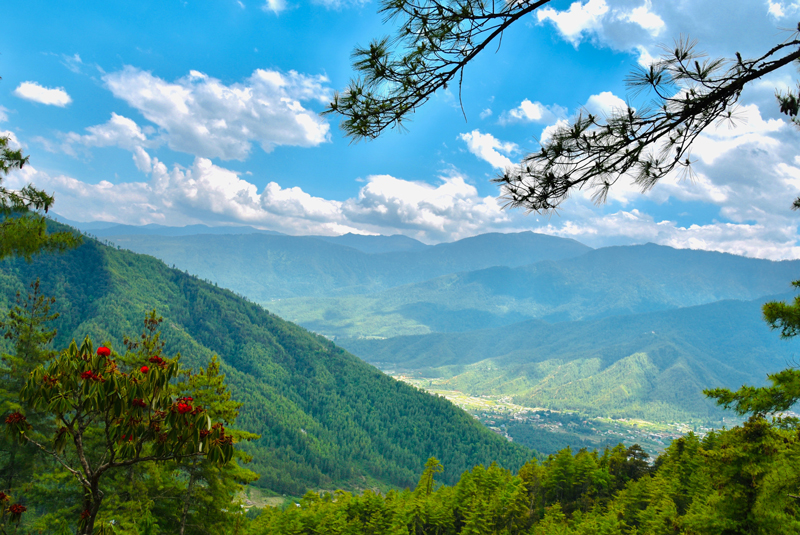
Regional differences in Bhutan
Bhutan, a small country in the Himalayas, has distinct regional differences in climate and geography. The southern region of Bhutan experiences a hot and humid subtropical climate with temperatures ranging from 15-30 degrees Celsius throughout the year.
In contrast, the central parts of the country have a cooler and more temperate climate due to their higher elevation. These regional differences also influence the local culture and traditions of the Bhutanese people.
Seasonal differences in Bhutan
Bhutan experiences four distinct seasons throughout the year, each with its own unique characteristics. In addition to these seasonal changes, there are also regional differences that contribute to the country’s diverse climate and landscape.
Weather in Bhutan from October to January is best for visiting as the weather is clear and the roads are perfect for travelling. In the southern parts of Bhutan, you will experience a subtropical climate with sunshine and forests and mountains in the middle part of the country will have cold winter while the mountains in the Northern parts of the country will be covered with thick snow if you travel in the winter.
Plan your itinerary while discussing with your operator to make your visit memorable and hassle-free. If you want to truly discover every aspect of the country, points of attraction, tourist places, activities and the local culture you can plan a month-long visit to this country.
Is it safe to travel to Bhutan?
If you’re wondering whether travelling to Bhutan is safe, the answer is a resounding yes! This small Himalayan kingdom is known for its peaceful and welcoming culture and has one of the lowest crime rates in the world. So, whether you’re exploring the stunning natural landscapes or immersing yourself in Bhutanese culture, you can rest assured that you’ll be safe and secure throughout your travels.
What are the requirements for Bhutan Travel?

Because of Bhutan’s tourism policies citizens of countries other than India , Bangladesh and Maldives require to pre-arrange their tour of a minimum of $250 with a Bhutanese registered travel agency and obtain their hotel bookings and the visa their after.
You can arrange your Bhutan travel only through the tour agencies that are approved tour operators by the Bhutan Tourism Council as listed on their official websites.
You will find different tour operators offering tours based on your interest in culture, nature, adventure and wellness.
What is the Bhutan visa policy ?
Bhutan visas are expensive as most countries have to obtain them after choosing a tour package of a minimum of $250 through a registered tourist agency. However, citizens of Maldives, Bangladesh, and India only have to pay a sustainable Development Fee of around $17. It’s important to plan ahead and budget accordingly for your Bhutan adventure.
Bhutan Visa Requiremen ts:
Here are the documents you will require while applying for a Bhutanese visa :
- You have to book your stay through a registered Bhutanese agency .
- You have to book a tour package which has nightly charges of at least $250.
- Validity of your existing passport for minimum six months.
- You have to submit the document for proof of your occupation.
- Provide contact information and address.
Application process : Through a registered travel operator
Cost: $40 just for the visa for each person and $250 per night for the tour
Time Validity : Single-entry with six months validity
Extension: Through your tour operator
SDF: Sustainable Development Fee is abducted from regional
Bhutan Tour Booking Guide
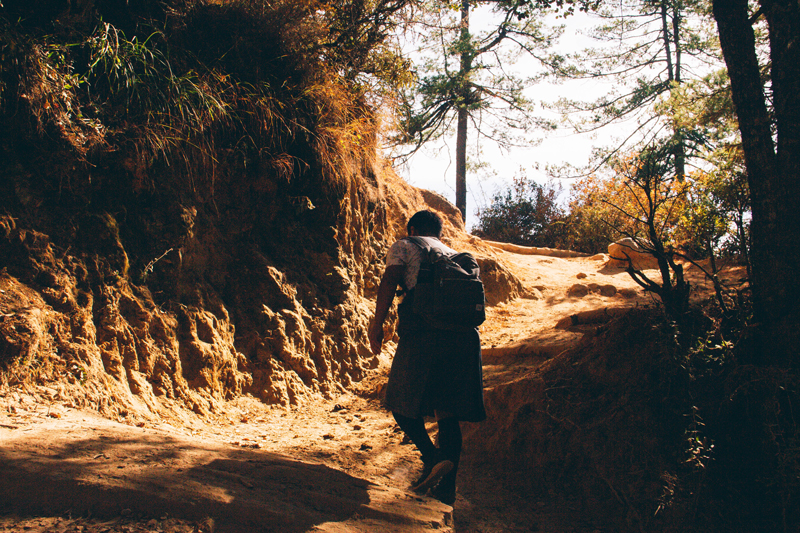
One of the few things you should remember while booking the tour package through your agency is to read the company policies and the refund policies if your visa gets cancelled. As per the tourism council of Bhutan, here are the necessary steps for tour booking in the Bhutan travel guide.
Step 1: Select the TCB registered tour operator you want to choose from the official website.
Step 2: Plan an itinerary or a tour package with your tour operator.
Step 3: Pay the amount for the tour package in advance along with the $40 for the one-time visa, through the international partners of Bhutan National Bank.
Step-4: The tour operator will complete your visa application and most of the time the visa is issued mostly within 1 week.
Step-5: Receiving the visa once approved through the mail.
Here is the list of Registered Tour Operators
Bhutan travel packages
Bhutan, the Land of the Thunder Dragon, is a unique and mystical destination that offers visitors a glimpse into a world unlike any other. If you’re planning a trip from Malaysia , there are a number of travel packages available that can help you make the most of your journey.
From exploring ancient monasteries and temples to trekking through the stunning Himalayan landscapes, these packages offer a range of experiences that are sure to leave you with memories that will last a lifetime.
Here are some package tours from Viator:
Glimpses of Bhutan – 4 Days Tour
7 Days Western Bhutan Tour
Photography Tour in Thimphu and Dochula Pass
A Journey to the Center of Bhutan
5 Nights 6 days Bhutan Tour
Types of Accommodation in Bhutan
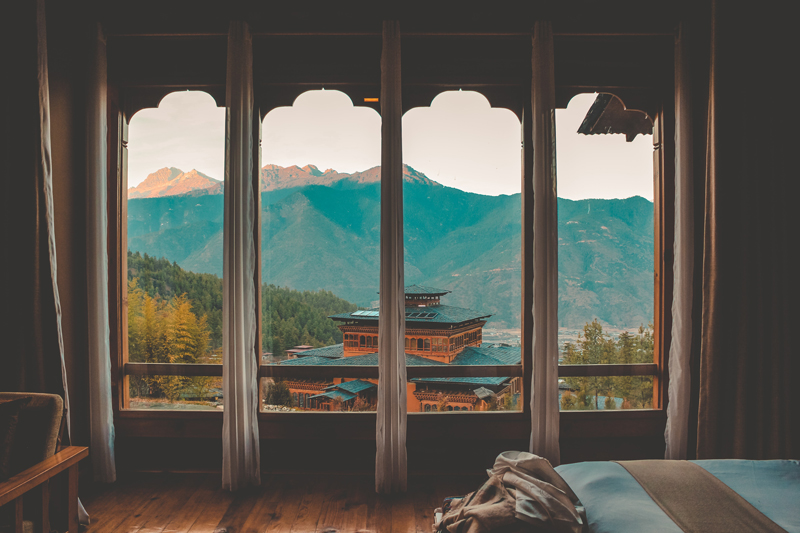
When you are choosing your tour package with your choice of tour agency you will have to choose your accommodation or stay. If you arrive through the Paro International airport and create an itinerary where you decide to stay at a hotel in Paro, here are some options for choosing accommodation.
Accommodation for visitors is of a few categories’ hotels, farm-stays, homestays, resorts, and guesthouses.
All the registered tour operators provide foreign tourists with at least 3-star hotels. Bhutan’s government has a preset system to rate hotels based on their service, hospitality and the set guidelines by the government.
Here is a list of the top-rated hotels you can consider to stay:
Zhiwa Ling Hotel (Address: Satsam Chorten, Paro, Bhutan)
Le-Meridian Paro (Address: Paro thimphu hwy, Shaba, 12001, Bhutan)
Gangtey Palace (Address: CCF7+R4J, Paro, Bhutan)
Terma Linka resort & spa (Address: Babesa-Thimphu Expressway, Thimphu 11001, Bhutan)
If you are from visa-free countries travelling to Bhutan, you can choose some of the budget options as most of them are two or three stars.
Foreigners from countries other than India, Bangladesh and Maldives may not be able to choose the budget hotels because of the set amount by TCB in Bhutan travel guide.
Here is a list of the best-rated budget hotels:
Khamsum Inn (Address: Phenday Oudpel Lam, Thimphu, Bhutan)
Zambala Riverview Hotel (Address: Bondey, Paro, Bhutan)
Centennial Hotel (Address: V97H+FXW Lower Market, Phuensum Lam, Phuentsholing, Bhutan)
Hotel Shantideva Bhutan (Address: Norzin Lam 1, Thimphu, Bhutan)
Guest-houses:
Guesthouses are one of the best options if you are looking for a traditional yet cosy environment. Many top-rated guest houses are located across the country which you can discuss with your tour operator. The guest houses are similar in terms of services offered by the hotel.
Farm-stays : Many tourists enjoy experiencing farm stays in Bhutan which will give you the experience of the locals and you can include it in your itinerary. Many farm-stays will ensure your experience of authentic meals, sighting of century-old farming traditional in the mountains.
Types of tours Bhutan Travel Guide
Cultural tour in bhutan:.

If you are planning your trip to Bhutan to understand the culture and heritage of the country you must visit the UNESCO heritage sites in Bhutan like the National Museum of Bhutan in Paro and the National Library , Royal Textile of Bhutan and the Dzongs .
As the primary religion of Bhutan is Buddhism their lifestyle, art,and customs are deeply influenced by Buddist values. Along with pristine rivers, Rocky Mountains you will also visit a lot of monastries, shortens and Ihakhangs in your Bhutan travel guide.
As far as Bhutanese lifestyle and traditions are concerned most Bhutanese love to live simply, worship their deities, enjoying their colourful traditional festivals, Bhutan is one of the countries in the world promoting sustainable tourism and living. The main sources of economy in the country is agriculture, hydropower and forestry.
Most cultural tour packages in Bhutan are planned highlighting Here is an exemplary of 5-day itinerary for Bhutan you can work with for the cultural tour of Bhutan :
Arrival and move to Thimpu : Arrive in Paro and move to the capital Thimpu. In Thimpu, you will visit the Zulekha Nunnery, National Emporium, Thimpu Dzong, the Motithang Takin Preserve.
Sightseeing in Thimpu : Visit the most appreciated tourist places in Thimpu like the Memorial Chorten, National Library, Handicrafts emporium, Institute of traditional medicine.
Thimphu to Punakha via Dochula la : In the drive, through the Dochul La, you will get a scenic view of the Himalayas and visit Wangduephodrung, Mehsina village, Chime Lakhang or Temple of fertility. After reaching Punakha visit the stunning Punakha Dzong in the mountains.
Punakha to Paro : Embark on a journey from Punakha to Paro and discover the vibrant local culture by wandering through the enchanting streets of Paro City.
Paro sightseeing : Visit its most popular heritage and historical sites like Tanpung dzong which is the residency of the Desi Tenzin Ragbye , Rinpun dzong and Nya-Mey Zam bridge.
Adventure tour in Bhutan:

Activities to do in Bhutan: If you want to enjoy the mountains, rivers at their best and the sheer thrill of adventure sports Bhutan has a lot to offer. Here is the ultimate list of adventure sports to try in Bhutan.
Rock Climbing in the Nose in Thimpu: The climbing route of ” The Nose ” ranges from 12 meters to 27 meters where rock climbing is conducted by Vertical Bhutan Club. It has 13 routes of climbing which you can choose from.
Whitewater rafting in Mo Chuu and Pho Chuu: This is one of the most fun adventure sport anyone can try. If you are a beginner at kayaking and rating in Mochu is advised as the water is calmer with fewer currents. The rafting starts at the bridge that leads to Khansum valley in Punakha and the rafting course stretches about 5.6 miles.
Kayaking in the Wang Chuu and Puna Tsang Chuu : Wang Chuu and Puna Tsang Chuu are two of the rivers in Thimpu that you can enjoy rafting on according to Bhutan Travel Guide. Wang Chuu is one of the tributaries of the Bramhaputra river. Rafting on Wang Chuu also gives you the chance to get the sight of Samteling palace and SAARC buildings.
Trekking and hot springs in Paro: Trekking to the Tiger’s Nest monastery is one of the enthralling activities you must try. There are also other one-day hiking routes such as Bumudra Hike, Chumpu Ney Hike in Paro that you can also attempt.
Paragliding in Kamshet near Ura valley : If you really want to feel the pumps of your heart and try adrenaline-induced paragliding near Kamshet where you will get a glance of the Sahyadri ranges of Himalaya.
Mountain biking: You can try mountain biking near Punakha, where the classic biking route famous among tourists are Khuruthang-Samdiingkha and Punakha etc.
Crossing suspension bridges in Punakha : One of the oldest and historically valued suspension bridges in the world, the Punakha suspension bridge surely should be one on your list. This 160-meter bridge will give you extreme thrill as you cross the bridge and you will see many Buddhist prayer flags.
You may not be able to include all of the above-listed activities in your itinerary but water rafting, rock climbing, crossing suspension bridges are unavoidable if you are a seeker for an adventure. Here are three adventure activities anyone can try if you are not anything scary.
Fishing in Thimpu, Punakha, Bumthang
Archery in villages near Paro
Wildlife Safari at the Royal Manas National Park
Nature Tour and Off-beat places:
As stunning as the country with the bliss of mountains Bhutan has a lot of offbeat and popular places where you can rest your wearing heart. If you are focusing on healing and absorbing the energy of nature while visiting Bhutan here is your Bhutan travel guide tips.
1. Plan your trip including the best places for nature and wildlife.
2. Include hikes with the tour operators to the rugged mountains and trekking in the valleys.
3. Try to get a glimpse of offbeat places like Haa, Phobjika valley, Jangtsa Dhumtseg Lhakhang, the 4. 4. Paro Taktsang to imbibe the memories deep in your heart.
5. Visit the National Handloom Project run by the Bhutanese National Women’s Association.
The ‘ Peaceful country of Dragons ” is surely one of the high-value countries that you can travel to. The picturesque trails, traditional architecture, green environment-friendly lifestyle will surely enthrall you. If you are from South Asia, then Here is a complete Bhutan Travel Guide for South Asians.
Related Posts
A bhutan travel guide | step by step guides for south asians.
Save my name, email, and website in this browser for the next time I comment.
This site uses Akismet to reduce spam. Learn how your comment data is processed .
Type above and press Enter to search. Press Esc to cancel.
Places To Visit in Bhutan
Here are the top 26 tourist places and attractions in bhutan.

1 out of 26 Places to visit in Bhutan 37 Tourist attractions
Paro is a small town situated in the Paro Valley of Bhutan. It is one of the most fertile as well as historic valley of Bhutan which is the widest in the Kingdom. It is home to 155 temples and monasteries dating back to the 14th century and also home to Bhutan's sole international airport....
Best Time: September till November.
2 out of 26 Places to visit in Bhutan 45 Tourist attractions
Nestled in the western central region, Thimphu, the capital city of Bhutan, captivates travelers with its blend of ancient traditions, breathtaking landscapes, and vibrant cultural heritage. As the political, economic, and cultural center of this enchanting kingdom, Thimphu offers visitors a rich ta...
Best Time: September to November, March to May
3 out of 26 Places to visit in Bhutan 11 Tourist attractions
Punakha is one of the 20 districts (dzongkhags) of Bhutan bordered by the Gasa, Wangdue Phodrang and Thimphu districts. Located at the height of 1200m above sea level, Punakha offers a mesmerising view of the Himalayas.
Best Time: March to May
4. Phobjikha Valley (Gangtey)
4 out of 26 Places to visit in Bhutan 9 Tourist attractions
Against the backdrop of western slopes of the Black Mountains in Wangdue Phodrang, lies the bowl-shaped Phobjikha valley that offers breathtaking views of vast expanses of green fields. It is home to the endangered black-necked crane that migrates to this area during winters. Phobjikha valley a...
Best Time: October to December
Bhutan Travel Packages
Compare quotes from upto 3 travel agents for free
Bhutan Tour Package From Bagdogra - Hike to Tiger's Nest
Mesmerising cultural bhutan tour for 4 nights - phobjikha valley excursion, bhutan itinerary for 8 days with trek to tiger's nest, bhutan 7 nights itinerary- dochu la pass, discover bhutan: a 9-day journey through the land of happiness, enchanting bhutan holiday package - excursion to chele le pass, 5. dochula pass.
5 out of 26 Places to visit in Bhutan
Nestled in the eastern edge of the Himalayas, the Kingdom of Bhutan boasts of spectacular mountain views and some of the happiest people in the world. And with this beautiful outlook of life came the creation of Dochula Pass, a breath-taking mountain pass, in commemoration of Bhutanese soldiers who ...
6. Haa Valley
6 out of 26 Places to visit in Bhutan
Known as the smallest Dzongkhang (district) of Bhutan, Haa Valley is one of the most picturesque places located at the south-west of Paro. The idyllic wooded forests and paths are ideal for enthusiastic hikers and trekkers. This is also the only place in the world where one can find the cream colour...
Best Time: October to November
7. Taste the Authentic Bhutanese Cuisine
7 out of 26 Places to visit in Bhutan
What the Bhutanese are essentially in love with is a spice which comes across so boldly in a variety of their dishes. Vegetarian tourists could breathe a sigh of relief about their food options. What is interesting to note is that despite the existence of many popular meat-based dishes, a significan...
8 out of 26 Places to visit in Bhutan 7 Tourist attractions
Trongsa is a hilltop town situated at the centre of Bhutan; hence known to be the heart of the Himalayan Kingdom. It's translated as "new village" in Dzongkha that has a backdrop of the black mountains offering beautiful views of the surrounding valleys.
Best Time: November to February
9. Hike Up the Tiger's Nest - Trek & Trekking Trail
9 out of 26 Places to visit in Bhutan
Tiger's Nest Monastery, or Paro Taktsang, is one of the most prominent Buddhist sites in Bhutan. Located 900 metres above the upper cliff in the Paro Valley, this monastery is undoubtedly an architectural marvel. Tiger's nest is known for the trek that has been carried on for years. With a total dis...

10. Bumthang
10 out of 26 Places to visit in Bhutan 11 Tourist attractions
Home to four beautiful mountain valleys and an array of ancient monasteries and temples, Bumthang takes its place as the most historic of all districts in Bhutan. Considered to be the spiritual centre of the Himalayan Kingdom, Bumthang is a beautiful place to visit if one has a keen interest in reli...
Best Time: March to May and September to November
11 out of 26 Places to visit in Bhutan 11 Tourist attractions
Nestled at the foothills of Choekhor Valley, Jakar is the largest and the most beautiful valley in Bumthang. It is popularly known as "Little Switzerland". Jakar is the principal administrative town of the district of Bumthang. Bumthang consists of four valleys - Tang, Ura, Choekhor and Chumey, out ...
Best Time: March to May, September to November
12. Wangdue Phodrang
12 out of 26 Places to visit in Bhutan 7 Tourist attractions
Being one of the largest Dzongkhangs (District) of Bhutan, Wangdue Phodrang has everything from monasteries and temple to wildlife and rustic villages. The reason why the region is different as compared to others is that it is very diverse in terms of subtropical forests in the south to cold, snowy ...
13. Chele La Pass
13 out of 26 Places to visit in Bhutan
Bhutan, being a country with a mountainous landscape, is linked with a series of passes. Located at approximately 13,000 feet between the valley of Paro and Haa, Chele La Pass is the highest motorable road pass in Bhutan. The pass is famous for the stunning Himalayan views it offers, especially Mt. ...
14. Phuentsholing
14 out of 26 Places to visit in Bhutan 5 Tourist attractions
The second largest town in Bhutan, Phuentsholing shares its borders with the Indian State of West Bengal. Serving as an entry point for travellers from Kolkata and Siliguri, it is an important economic hub of Bhutan. An urban centre, it is more developed than most of the towns of Bhutan, yet it has ...
Best Time: April to June
15. Samdrup Jongkhar
15 out of 26 Places to visit in Bhutan 3 Tourist attractions
Samdrup Jongkhar is a small town in South-Eastern Bhutan and is located at the border of Assam and Arunachal Pradesh. Its proximity to the Indian border with multiple Indian shopkeepers and hawkers setting up shops here makes it one of the largest urban centres of Bhutan.Samdrup Jongkhar, a beautifu...
16 out of 26 Places to visit in Bhutan 5 Tourist attractions
Mongar is a small town situated in Eastern Bhutan, widely known for its lemongrass production in the country. It is also one of the oldest education centres in the country. With a population of about 40,000 people, Mongar is one of the fastest developing districts in Bhutan. It is also the site ...
Best Time: September to November
17. Lhuentse
17 out of 26 Places to visit in Bhutan 6 Tourist attractions
Lhuentse is a small town located 67 kilometres away from Mongar in Eastern Bhutan. The town is remote and one of the least developed districts in Bhutan which was formerly known as Kurtoe. It is the ancestral home of the Royal family; hence keeping the most distinct art forms of the country intact.
18. Trashigang
18 out of 26 Places to visit in Bhutan 4 Tourist attractions
Trashigang, called the 'Jewel of the East', is a beautiful hill station located in Eastern Bhutan, spread across an altitude ranging from 600 m to over 4000 m. It is the largest district of Bhutan and is immensely beautiful and serene. Trashigang is also a renowned town for trade-in Bhutan, serving ...
Best Time: October to December, April to May
19. Royal Manas National Park
19 out of 26 Places to visit in Bhutan
The oldest national park in Bhutan, Royal Manas National Park is one of the largest national parks in the country. Known as the "conservation showpiece of the Kingdom", it is the largest example of tropical and sub-tropical ecosystems in Bhutan. Occupying south-central Bhutan, it shares its southern...
20. Laya Gasa Trek
20 out of 26 Places to visit in Bhutan
Laya Gasa trek is one of the most popular and scenic long-distance treks in the northern Himalayan region of Bhutan, along the border with Tibet.
21. Mountain Biking in Bhutan
21 out of 26 Places to visit in Bhutan
Speeding up your bike en route to the top of the hill and playing with wind and speed while enjoying the beautiful sights from there is one of the best experiences that a man can fathom in his lifetime. And what's a better way to get your adrenaline racing than mountain biking in Bhutan? With its vi...
22. Archery in Bhutan
22 out of 26 Places to visit in Bhutan
Seeing the level of enthusiasm that Bhutanese have for this sport, it would not be wrong to say that archery is the crown jewel of the country. And it must be the aura of Bhutan that even the tourists can't resist themselves to enjoy one or more matches of archery. The joy of seeing an arrow leaving...
23. Rock Climbing in Bhutan
23 out of 26 Places to visit in Bhutan
While many tourists love conquering the high cliffs by hiking, some take the adventure a few notches higher with rock climbing which take mental and physical determination, body strength, agility, perfect balance, endurance and also control over the mind. It was in early 1998 that Bhutan first opene...
24. River Rafting in Bhutan
24 out of 26 Places to visit in Bhutan
With a number of rugged, untamed rivers meandering through its map, Bhutan offers the perfect destination for river rafting. Mo Chhu, Paro Chhu in Punakha, Sankosh River, Mangde Chhu, Wang Chhu, Puna Tsang Chhu and the Dangme Chhu are considered to be the best for rafting due to their easy access an...
25. Trekking in Bhutan
25 out of 26 Places to visit in Bhutan
Trekking in Bhutan is undoubtedly a most astonishing and adventurous experience for hikers around the globe. No matter whether you are an amateur or an expert in trekking, you will get your fair share of adrenaline on whichever trekking route you choose as per the difficulty levels. Just ensure that...
26. Visit the Motithang Takin Preserve
26 out of 26 Places to visit in Bhutan
The crown jewel of Thimphu, Motithang Takin Preserve is a protected area where the national animal of Bhutan, Takin, is preserved. A half an hour walk here would unveil many exotic birds and animals to you, who wander around the area freely and in the most natural of habitat. Overflowing with sereni...
Browse Package Collections
Bhutan package collections.
Bhutan Honeymoon Packages
Nepal Bhutan Tour Packages
Bhutan Family Tour Packages
Top Destinations for Packages
Phobjikha Valley (Gangtey)
Wangdue Phodrang
Phuentsholing
Nearby Countries for Packages
Top listed packages.
Bhutan 5 Day Itinerary including Thimphu & Paro
FAQs on Bhutan
What is the tourism policy of bhutan, what is the currency of bhutan, what is unique about culture of bhutan, what is the history of bhutan.
The Buddhist history of Bhutan is known with certainty as a written history was maintained after Mahayana Buddhism was introduced into the country in the 7th century by the King Songtsen Gampo. Widespread conversion to Buddhism was witnessed during this period. For the next thousand years, Bhutan existed as a series of rival monarchies in separate mountain valleys, but Buddhism remains, to date, the integrating factor. Read more on the History of Bhutan.
Top Hotel Collections
Luxury Hotels
Nearby Countries

Related Posts

Art & Culture
27 Interesting Facts About Bhutan You NEED to Know!

Delhi to Bhutan : A Budget Friendly Way to Reach Bhutan from Delhi

Monasteries in Bhutan

Best Things to Do in Bhutan

Travel Tips
Bhutan Visa for Indians - Entry Permit, Sustainable Development Fees & More

Food & Drink
Food Of Bhutan - 19 Bhutanese Dishes You Must Try

Religion in Bhutan - Bhutanese People and Their Culture

Sightseeing
Cities in Bhutan

Dresses of Bhutan - Traditional Dress of The Himalayan Kingdom

History of Bhutan - Unraveling the Historical Pages of Bhutan

Culture of Bhutan: Explore the Mysterious Nature of the Himalayan Kingdom
Get the best offers on Travel Packages
Compare package quotes from top travel agents
Compare upto 3 quotes for free
- India (+91)
*Final prices will be shared by our partner agents based on your requirements.
Log in to your account
Welcome to holidify.
Forget Password?
Share this page

Phone: + 91 11 28084902
Mail: [email protected]
Enquire now

Destination Specialist since 1999
Visitbhutan.com provides unbeatable holiday experience in bhutan discover the happiness kingdom now, destinations.
Endowed with a rich living culture and pristine natural environment complemented by a development philosophy that espouses balance growth, Bhutan continues to gain momentum as a high-end destination in South Asia.
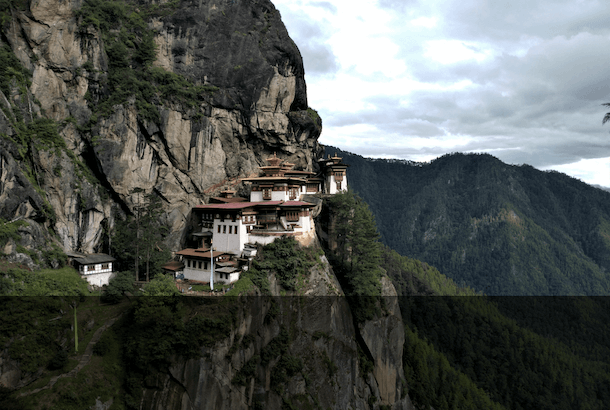
Gangtey & Phobjikha Valley
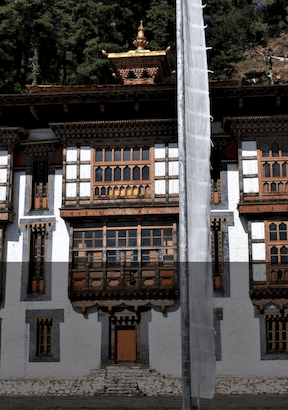
Bumthang (Jakar)
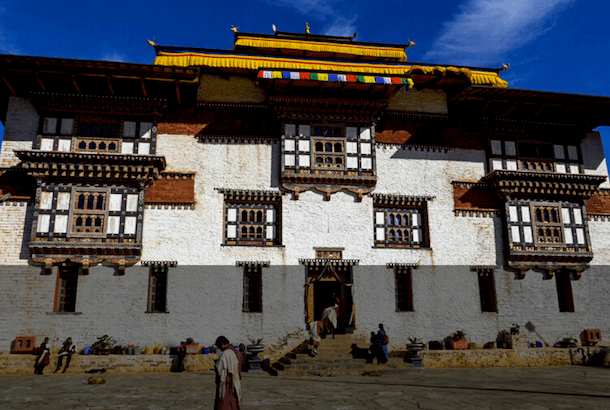
Popular Tour Packages
Bhutan is indeed the last Shangri-La. Our diligently crafted tour packages offer an opportunity to explore and experience this extraordinary land in the most effective way by integrating travel concepts to local lifestyles, wellness, learning & education, adventure and cultural elements.
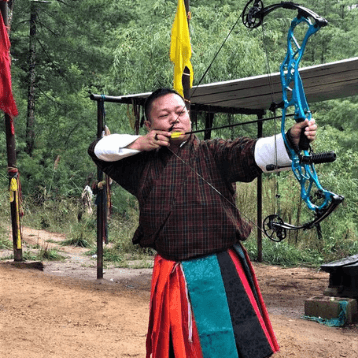
Bhutan Active Holiday
10 Days, 9 Nights
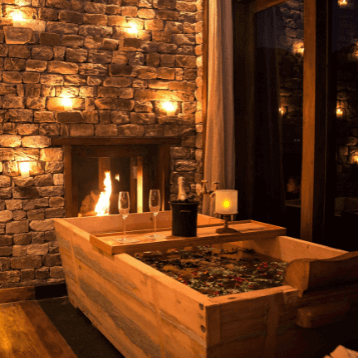
Bhutan Wellness Tour
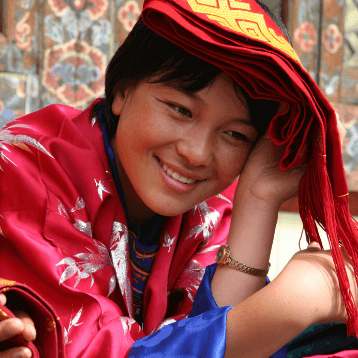
A Week's Tour in Bhutan
7 Days, 6 Nights
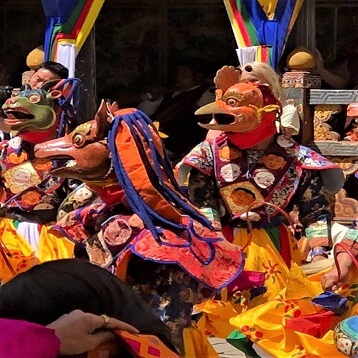
Paro Tshechu (Festival) Tour
8 Days, 7 Nights
Top Recommended Hotels, Lodges & Homestays in Bhutan
A wide range of accommodation options are available in Bhutan ranging from luxurious 5-star hotels to cosy charming hotels and farmhouses. Situated conveniently in the heart of the city or around the spectacular landscape, they are a pleasant surprise to many visitors.
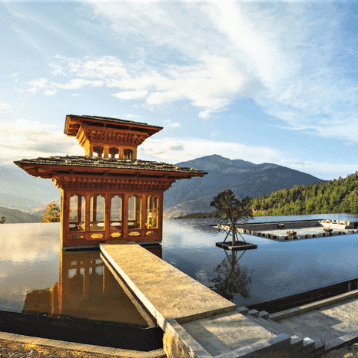
Six Senses Thimphu
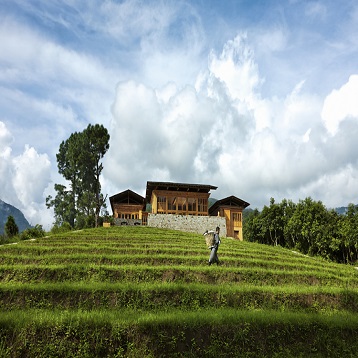
COMO Uma Punakha
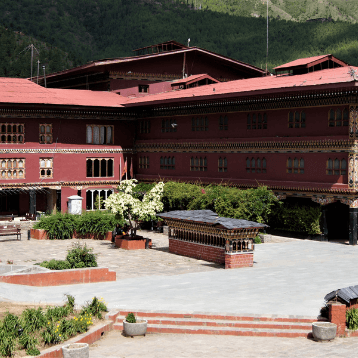
Paro Eco Lodge
Most popular festival tours in bhutan, top recommended trekking packages in bhutan.
Trekking in Bhutan is a truly an amazing experience. From the warmth and lush vegetation of the river valleys to the icy slopes of the eastern end of the Himalayas, one will encounter some of the most stunning scenery and friendly people imaginable.
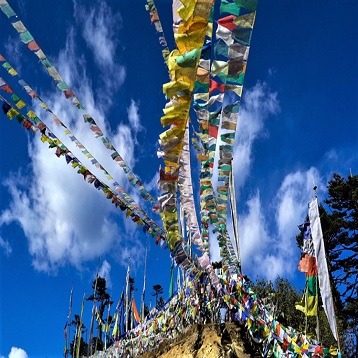
Bumthang Owl Trek
13 Days, 12 Nights
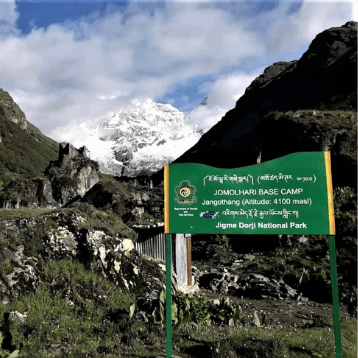
Chomolhari Trek (Jumolhari Trek)
15 Days, 14 Nights
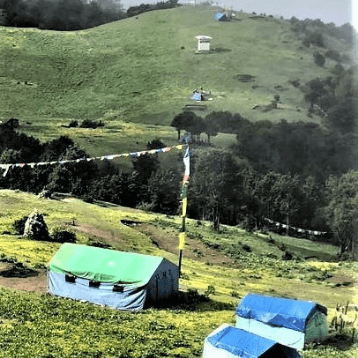
Bumdra Trek & Highlight of Bhutan
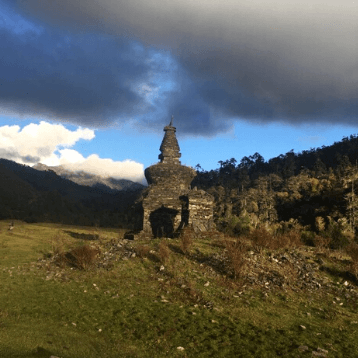
Merak - Sakteng Trek & Extensive Bhutan Tour
18 Days, 17 Nights

Tours for Indian Passport Holders
With its pristine natural environment and vibrant Buddhist culture, Bhutan is an ideal destination for cultural freaks and wanderlusts. Our wide range of especially designed tours of varied duration introduce travellers to the various aspect of Bhutanese tourism resources.
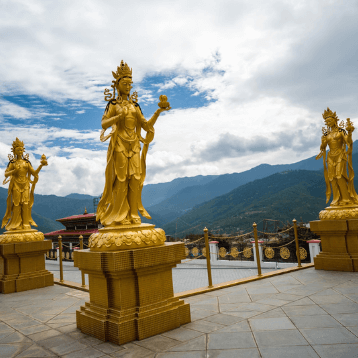
The Amazing Bhutan Tour
5 Days, 4 Nights
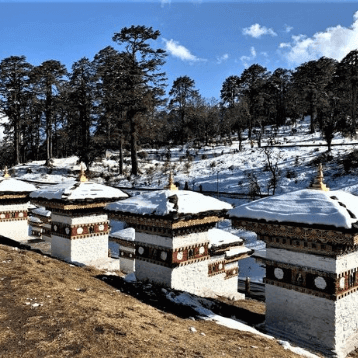
The Enchanting Bhutan Tour
6 Days, 5 Nights
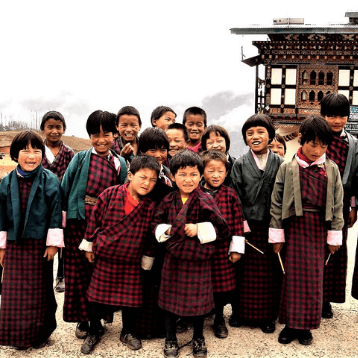
Journey to Happiness Kingdom
Sharing one’s travel experience and knowledge is not only informative but at times helpful in planning one’s trip. Covering a variety of subjects, our blogs are insightful & interesting.
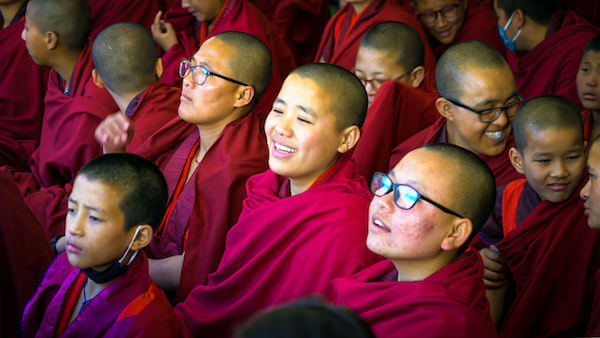
Posted On : 3rd January 2022
Gross National Happiness Bhutan’s Developmental Formula to the World
GNH has evolved from a noble aspiration into a more quantifiable tool, in the country. Read this blog to know more about Bhutan's Gross National Happiness Philosophy
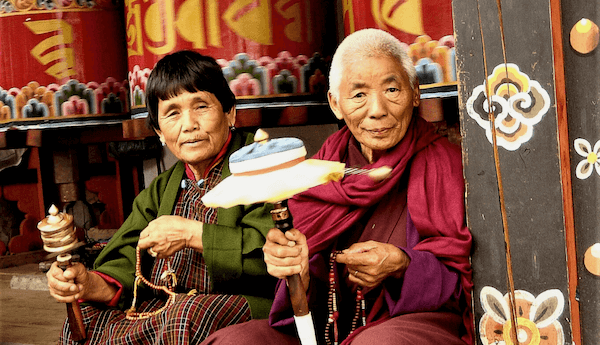
Posted On : 6th January 2022
Buddhism and Bhutan
We are what we think. All that we are arises with our thoughts. With our thoughts, we make the World - Buddha
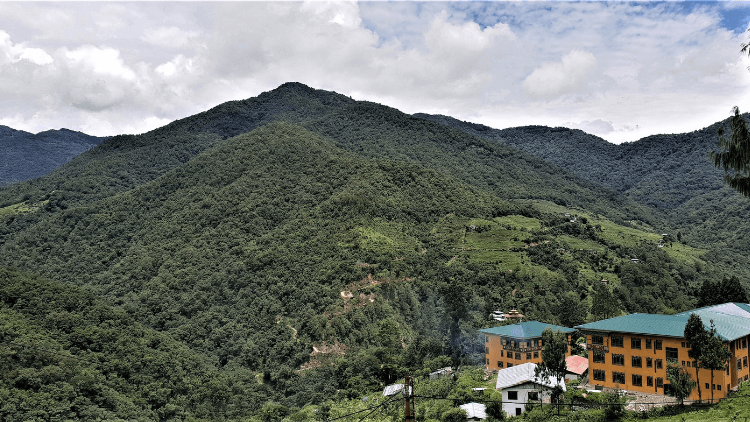
Posted On : 8th June 2023
The Unspoiled Natural Environment of Bhutan and Country’s Commitment to Sustainable Tourism

Everything you need to know about visiting Bhutan

For travelers craving unspoiled nature, a less-crowded destination or an escape from life's hustles, Bhutan is an ideal destination. Visiting the Land of the Thunder Dragon isn't a simple or inexpensive trip to arrange, however, thanks to its remote location in the Himalayas.
Still, that complexity more than makes the effort worth it, as it adds to Bhutan's charm. You won't find giant shopping malls overrun with tourists, and you won't encounter heaps of trash, either, as the country banned plastic bags back in 1999.
This way of life is intentional: The country prioritizes "Gross National Happiness" rather than gross domestic product. This means the Last Shangri-La (as it's often called) limits how many tourists can visit annually — and it only opened to foreign tourists in 1974. Bhutan has strict rules in place to preserve its identity and its tranquility, so it can continue to offer idyllic experiences in a relatively untouched setting.
While this approach was easy to maintain during the worst of the coronavirus pandemic, when Bhutan decided to fully close its borders to foreigners, after nearly two years, the country started welcoming visitors again Sept. 23, 2022. But with that reopening came an overhauled set of tourism rules.
If you want to have a memorable trip to this picturesque destination, here's everything to keep top of mind when planning a trip to Bhutan, one of TPG's best places to travel in 2023 .
Bhutan's tourism rules
Visitors from Bangladesh and the Maldives don't need permission to visit Bhutan, and Indian citizens only need preapproval from the government to enter. However, citizens from all other countries need a visa and must obtain it before traveling to Bhutan, as there is no option for getting one on arrival.
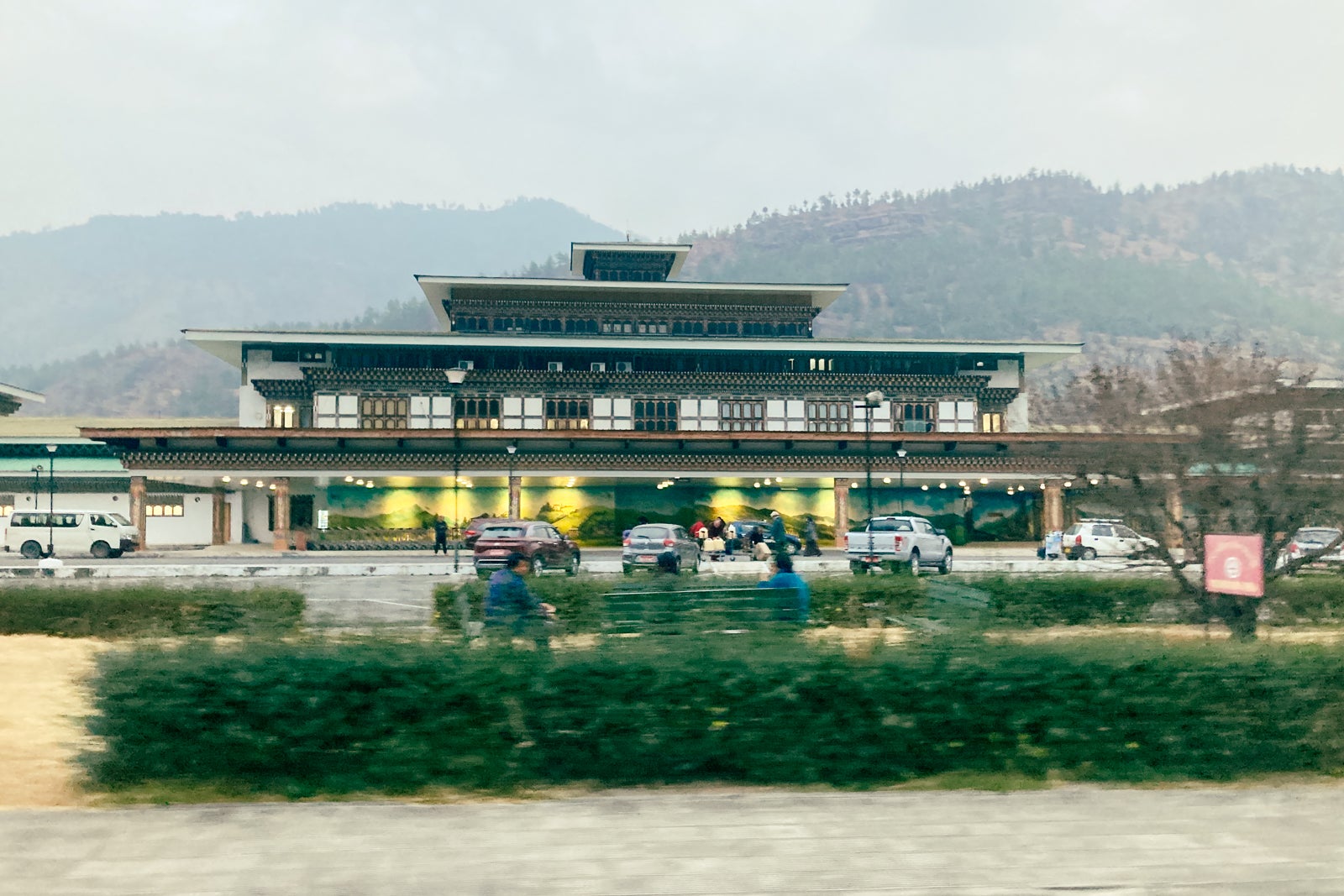
Additionally, all foreigners will need to pay a daily sustainable development fee, which subsidizes Bhutan's national health care and education services for citizens and helps with the country's "high value, low volume" approach to tourism . For Indians, this daily fee is 1,200 Bhutanese ngultrum (roughly $14.50). For other nationalities, the fee is now $200 per day for adults, with a 50% discount for children ages 6 to 12 (fees are waived for children 5 and younger).
Before September 2023, the visitor fee was $65 per day, though tourists also were required to book tour packages with government-established prices typically ranging between $200 and $300 per day — a policy that's no longer in place. The removal of this tour package requirement, which included guides, meals and lodging, is welcome news to travelers who prefer to pick services a la carte and those who can use rewards points to cover some costs. It also makes it easier to budget for your trip, as the tour package fee would fluctuate depending on your chosen travel dates, unlike the revised visitor fee, which remains a set price no matter when you plan on visiting.
How to get a visa to visit Bhutan
Aside from the visa exemptions noted above, foreigners will need to pay a $40 visa application fee to visit Bhutan. It's possible to pay for the visa application fee and the daily sustainable development fee online via the Bhutan Department of Immigration website .
To apply for a visa, you'll need to submit a scanned copy of your passport (which needs to be valid for at least six months past your visit to Bhutan), plus a passport photo and proof of travel insurance covering your visit.
After providing your travel details, such as flight and hotel information, and uploading your documents, you'll have two options for payment: bank transfer or credit card. The website does not charge a fee for bank transfers, but your bank may assess a fee for international wire transfers. For payments made with an international credit card, you'll incur a 4.75% fee, though this fee is often less than what banks will charge for international wire transfers. For example, my credit card fee was $20.90, well below the $35 fee my bank would've required had I opted to pay by international wire transfer.
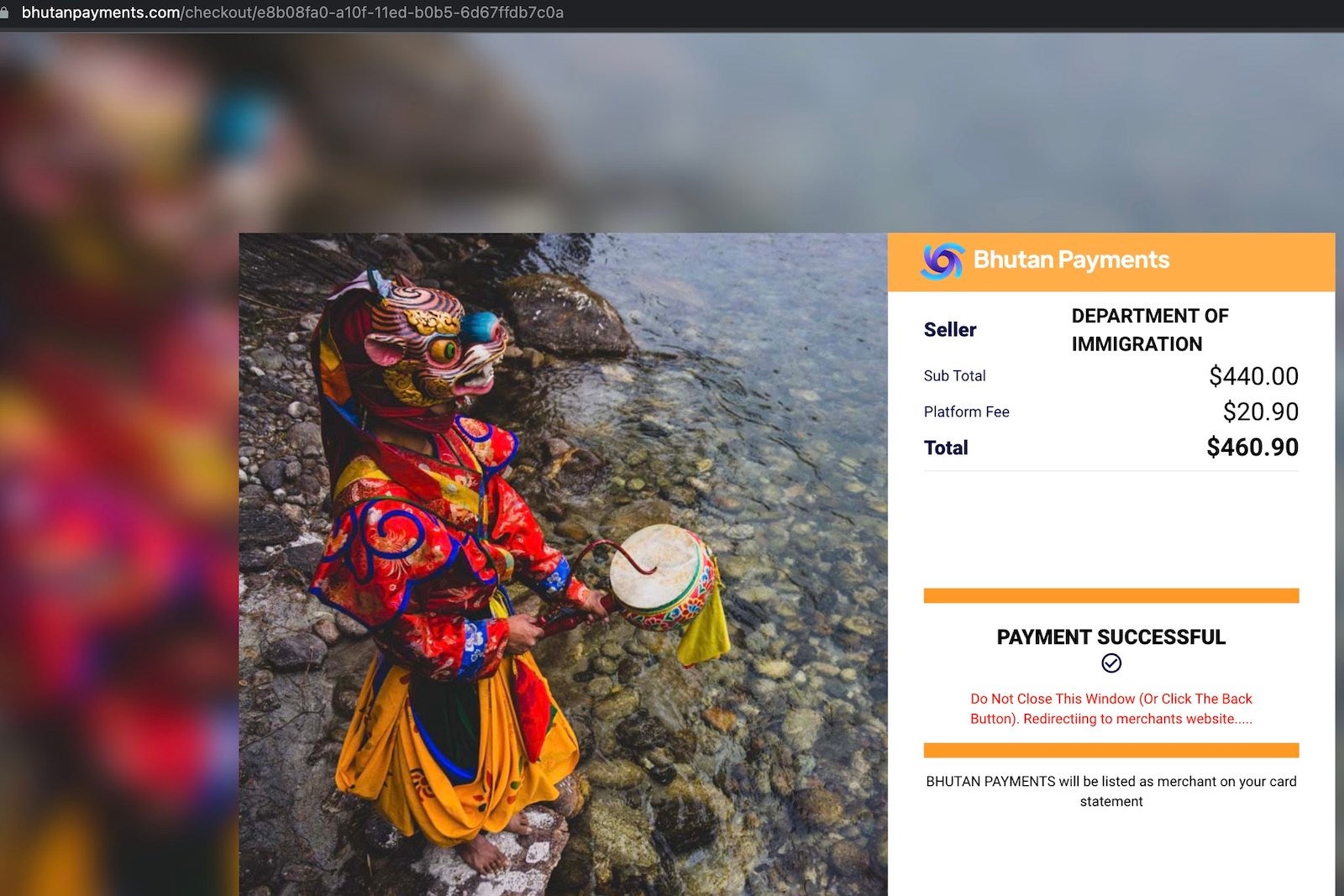
Payments will report as "general" or "other" on your credit card statement when paying by credit card. Thus, you should use your favorite credit card for everyday spending since you won't earn extra points through bonus categories.
How to get to Bhutan
Although this landlocked country shares borders with India and Tibet, only the border with India permits land crossings at three points: Phuentsholing (in western Bhutan), Gelephu (in central Bhutan) and Samdrup Jongkhar (in eastern Bhutan).
There are no trains in Bhutan, so land crossings are only possible by bus or car. Road permits are required for tour operators, though these aren't needed if you arrive by bus.
Buses are available between Phuentsholing and two cities in India: Kolkata (roughly 18 hours away) and Siliguri (about four hours away). Once you arrive in Phuentsholing, you can then take a bus or taxi to Bhutan's larger cities — but take note of the requirement for guides (covered below) when traveling through these regions.
Arriving by air is also possible. Most tourists get to Bhutan by traveling to Paro International Airport (PBH) near Paro, Bhutan's second-largest city.
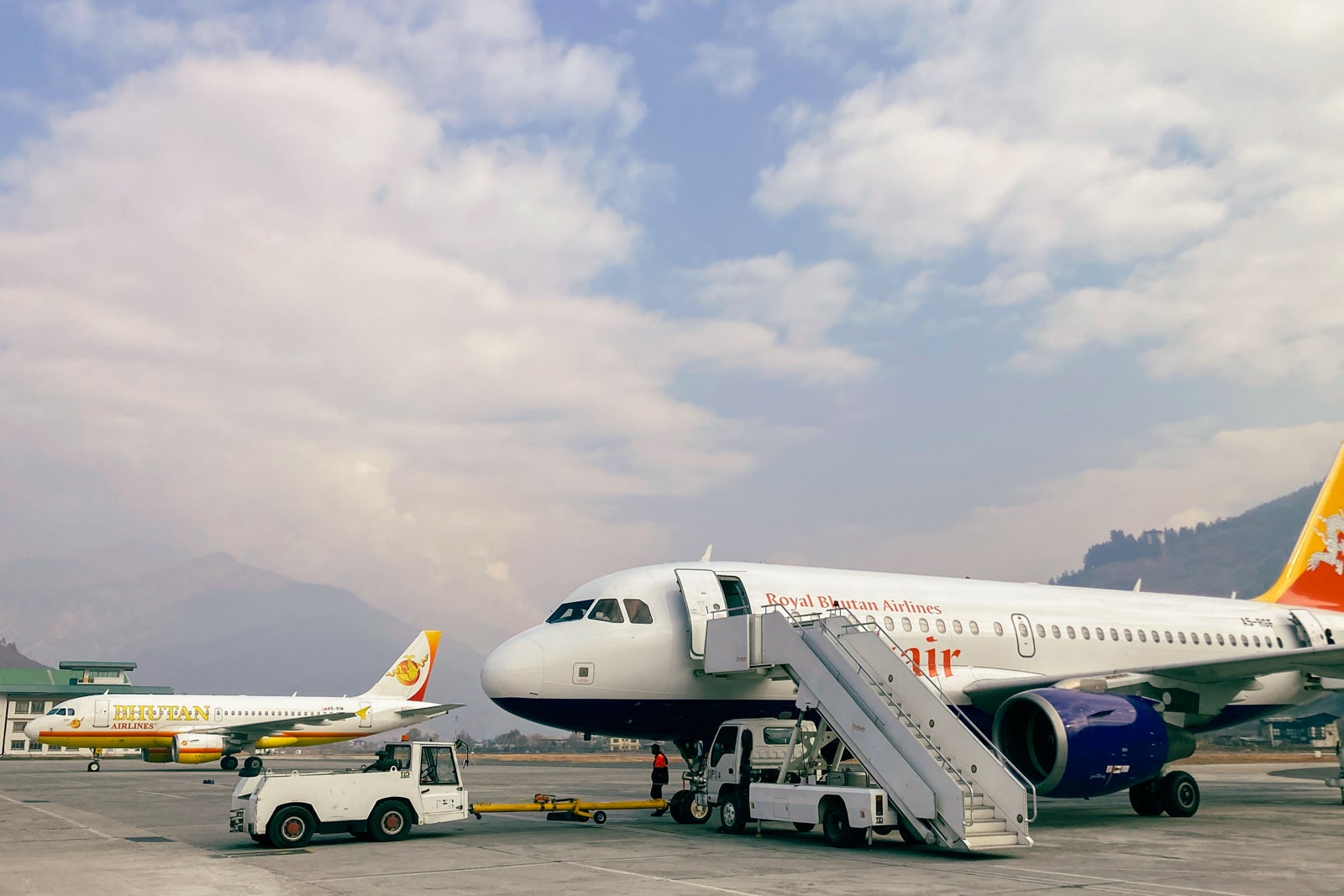
Paro's airport is served by just two airlines: Bhutan Airlines (a private company) and Drukair (the national airline also known as Royal Bhutan Airlines). Both airlines fly between PBH and the following airports:
- Delhi Indira Gandhi International Airport (DEL) in New Delhi .
- Netaji Subhash Chandra Bose International Airport (CCU) in Kolkata.
- Tribhuvan International Airport (KTM) in Kathmandu, Nepal.
- Suvarnabhumi Airport (BKK) in Bangkok .
Drukair also offers domestic connections between PBH and Bathpalathang Airport (BUT) in Jakar, Gelephu Airport (GLU) in Gelephu and Yongphulla Airport (YON) near Trashigang, plus routes to these international airports:
- Hazrat Shahjalal International Airport (DAC) in Dhaka, Bangladesh.
- Singapore Changi Airport (SIN) .
- Bagdogra International Airport (IXB) in Bagdogra, India.
- Gaya Airport (GAY) in Gaya, India.
- Lokpriya Gopinath Bordoloi International Airport (GAU) in Guwahati, India.
Ticket costs range from $110 per person each way for the shortest international flights to $550 per person for flights to Singapore. International airlines are not permitted to fly into Bhutan, which creates complications for award travel. You can't book these flights with your favorite Oneworld or SkyTeam partners, and you won't find these flights through the American Express travel portal or the Chase Ultimate Rewards travel portal . You must book directly with the airlines.
If you're looking to use points and miles for flights to Bhutan, you have a few options for reimbursing yourself after buying a ticket:
- You can cash out points for a statement credit .
- You can redeem points and miles to cover travel purchases at elevated rates (with select Capital One credit cards and Bank of America cards , for example).
Where to stay in Bhutan
While using points and miles for flights to Bhutan is tricky, there are a few solid options for booking award stays at hotels in Bhutan.
If you have World of Hyatt points you're hoping to use for your trip, consider redeeming them for a stay at the Bhutan Spirit Sanctuary near Paro. You can also use a Category 1-7 free night award to bed down at this Small Luxury Hotels of the World property .
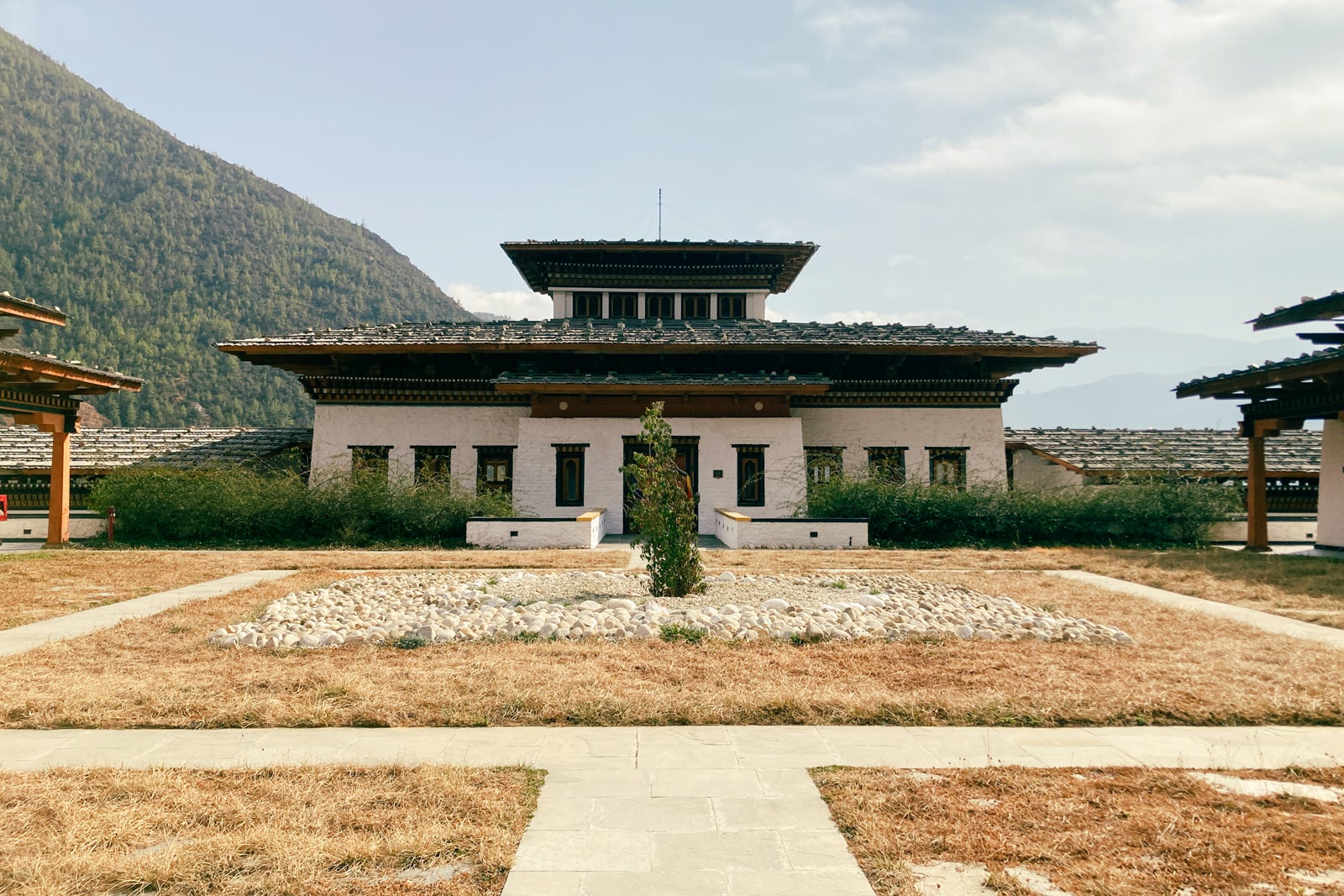
For travelers with Marriott Bonvoy points, there are two Marriott -affiliated properties to choose from as well: Le Meridien Paro, Riverfront and Le Meridien Thimphu. Both hotels are bookable with 35,000-point free night certificates most nights of the year.
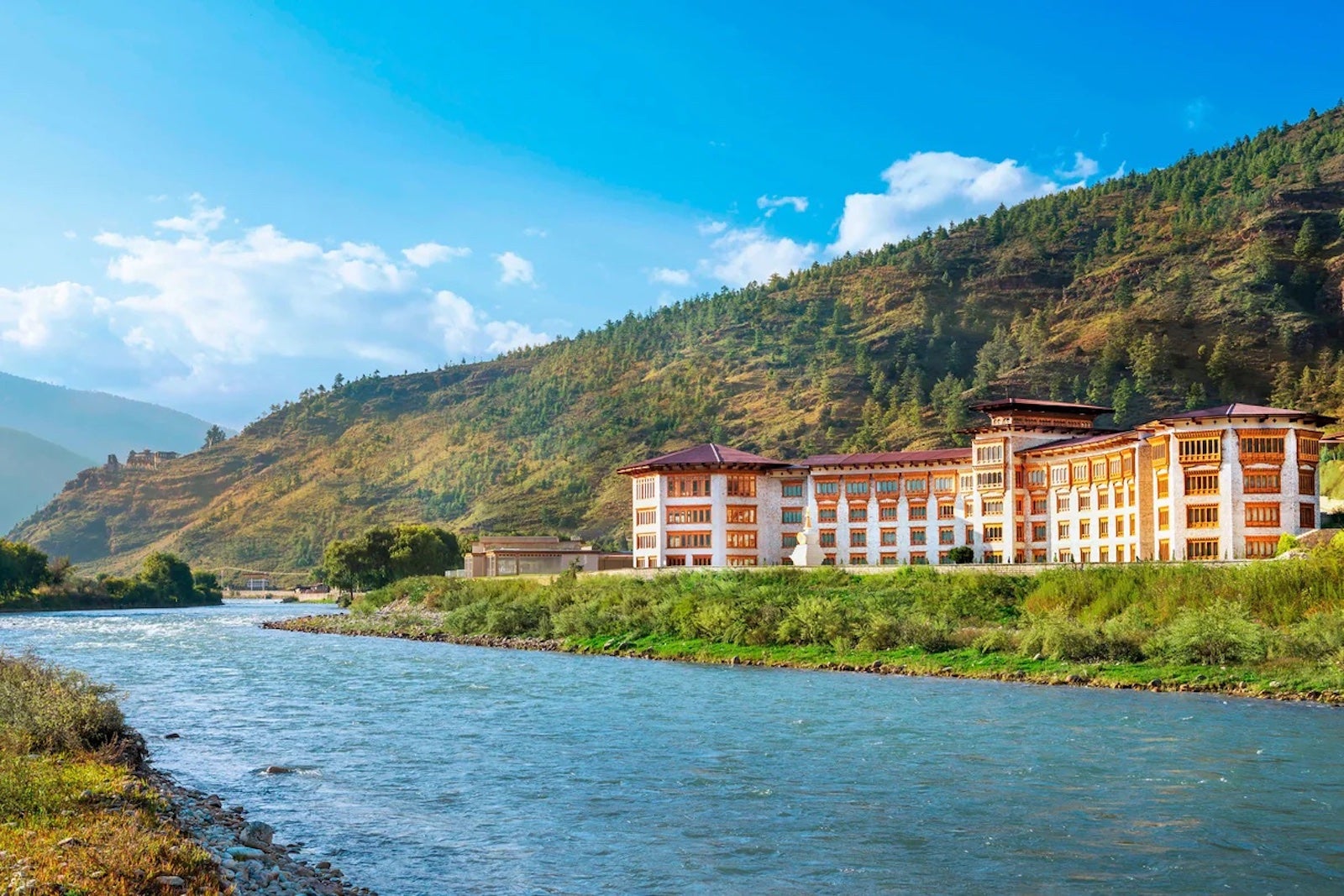
IHG has a few Six Senses properties in Bhutan, too, but unfortunately, none of them can be reserved with IHG One Rewards points. Additionally, stays at these Six Senses outposts in Thimphu, Punakha, Paro, Gangtey and Bumthang do not come with elite benefits if you have status with IHG's loyalty program.
There aren't any options for using points from Hilton Honors , Wyndham Rewards or Best Western Rewards , but you can find hotels in the travel portals for American Express , Capital One , Chase and Citi , making it possible to use credit card points to pay for accommodations.
None of Bhutan's hotels are available with American Express Fine Hotels + Resorts , Amex's The Hotel Collection or Capital One's Premier Collection . One hotel is available in Chase's Luxury Hotel & Resort Collection , but you can't redeem Chase Ultimate Rewards points for these bookings.
Related: A comparison of luxury hotel programs from credit card issuers: Amex, Chase and Capital One

To get around this issue of using points for hotel bookings, consider reimbursing yourself for expenses after making your hotel reservation.
The best things to do in Bhutan
Trekking in the mountains is an extremely popular activity in Bhutan, and you'll find a range of trails for all skill levels, all seasons and all budgets.
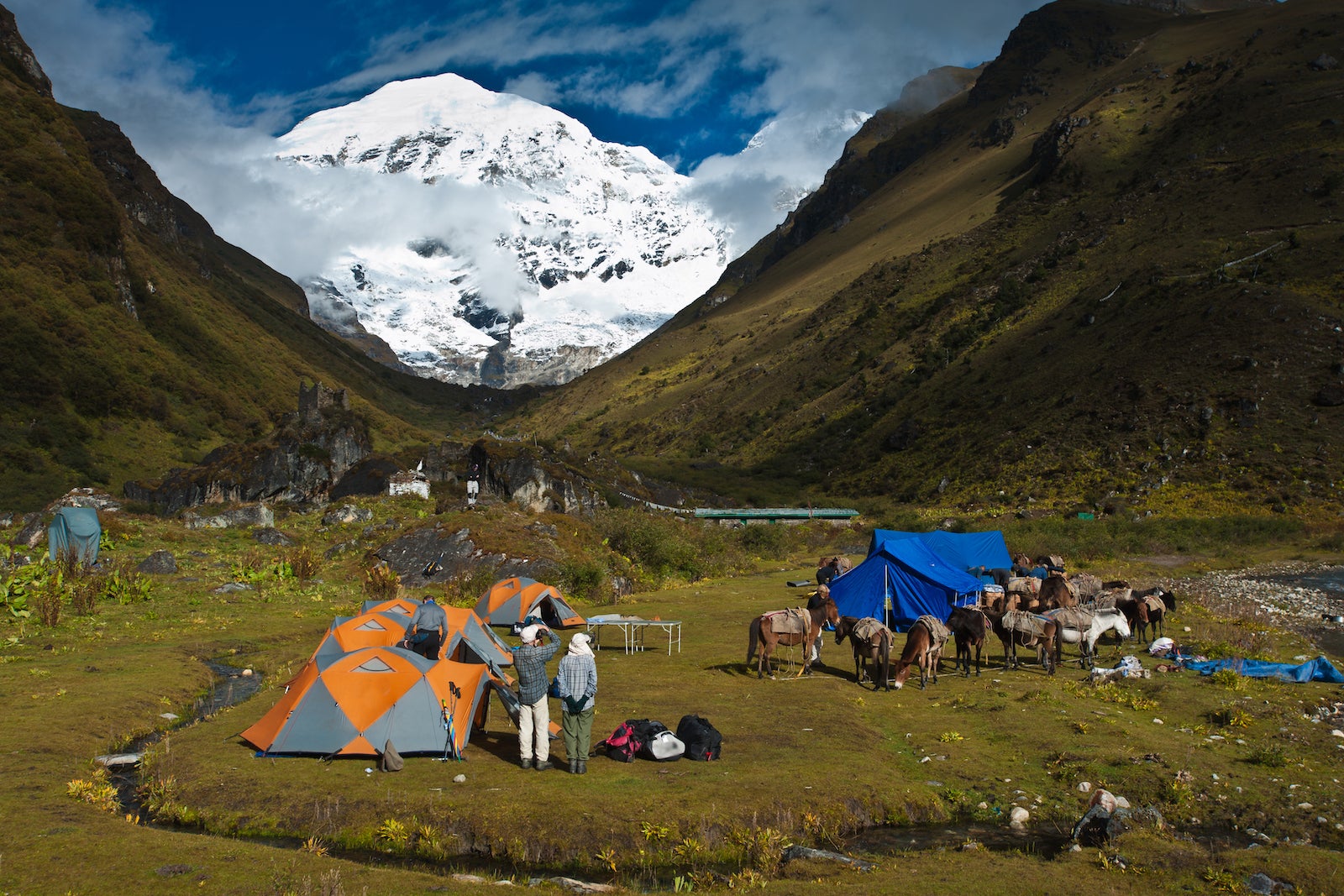
If you're interested in experiencing nomadic life and the birthplace of yeti myths, visit Merak village in the far east. This area only opened to tourism in 2012 and is the home of the seminomadic Brokpa people, many of whom have stories of personal encounters with the fabled yeti.
Travelers who want to enjoy nature can find plenty of it in Bhutan thanks, in part, to the government mandating 60% of its land be covered by forests . Head to one of Bhutan's five national parks to take in the stunning scenery.
Phrumsengla National Park, in the center of the country, is a bird-watcher's paradise, while Royal Manas National Park, near the border with India, is home to tigers, elephants, rhinos, leopards and golden langurs. Allot more than one day for wildlife viewing in case you don't spot the critters you wish to see during your first outing.
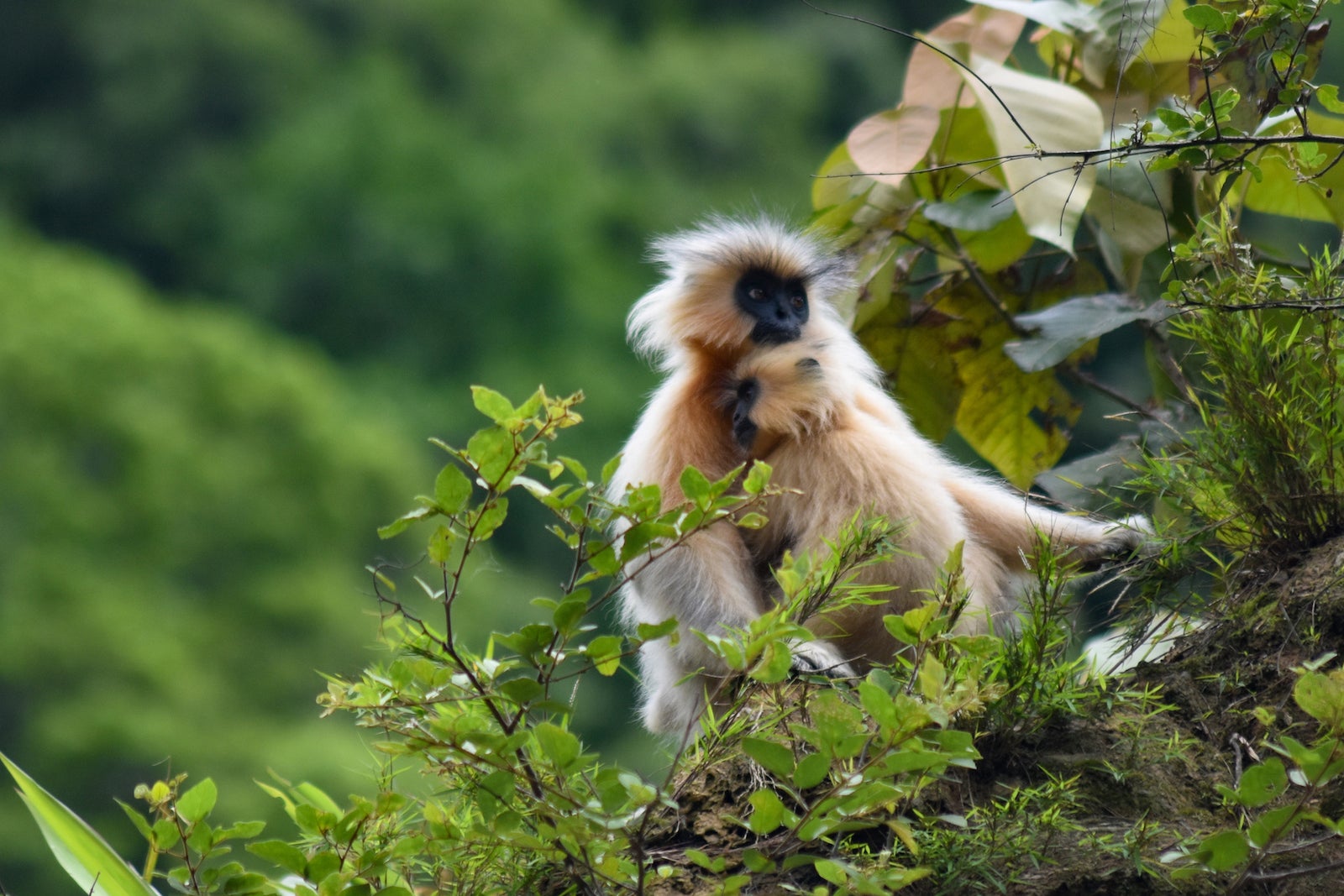
The most popular site in Bhutan may be Paro Taktsang (the Tiger's Nest). It was built in 1692 on the site where locals believe Guru Rinpoche (a national hero who brought Buddhism to Bhutan in the eighth century) prayed and meditated for three months before fighting an evil that was afflicting the locals. According to legend, he arrived by flying on a tigress — thus the site's name.
It's possible to visit the Tiger's Nest during a daytrip from Paro or Thimphu, though you'll need to have at least a moderate fitness level to access the site, as it's built into the side of a mountain. The hike starts at a parking lot next to a ticket booth that sits approximately 7,000 feet above sea level, so you may want to wait at least one day after arriving before taking this trip if you're unaccustomed to high altitudes.
The temple is another 1,700 feet up the mountain, and reaching it typically requires two to three hours of walking for most people, plus several hundred stairs.
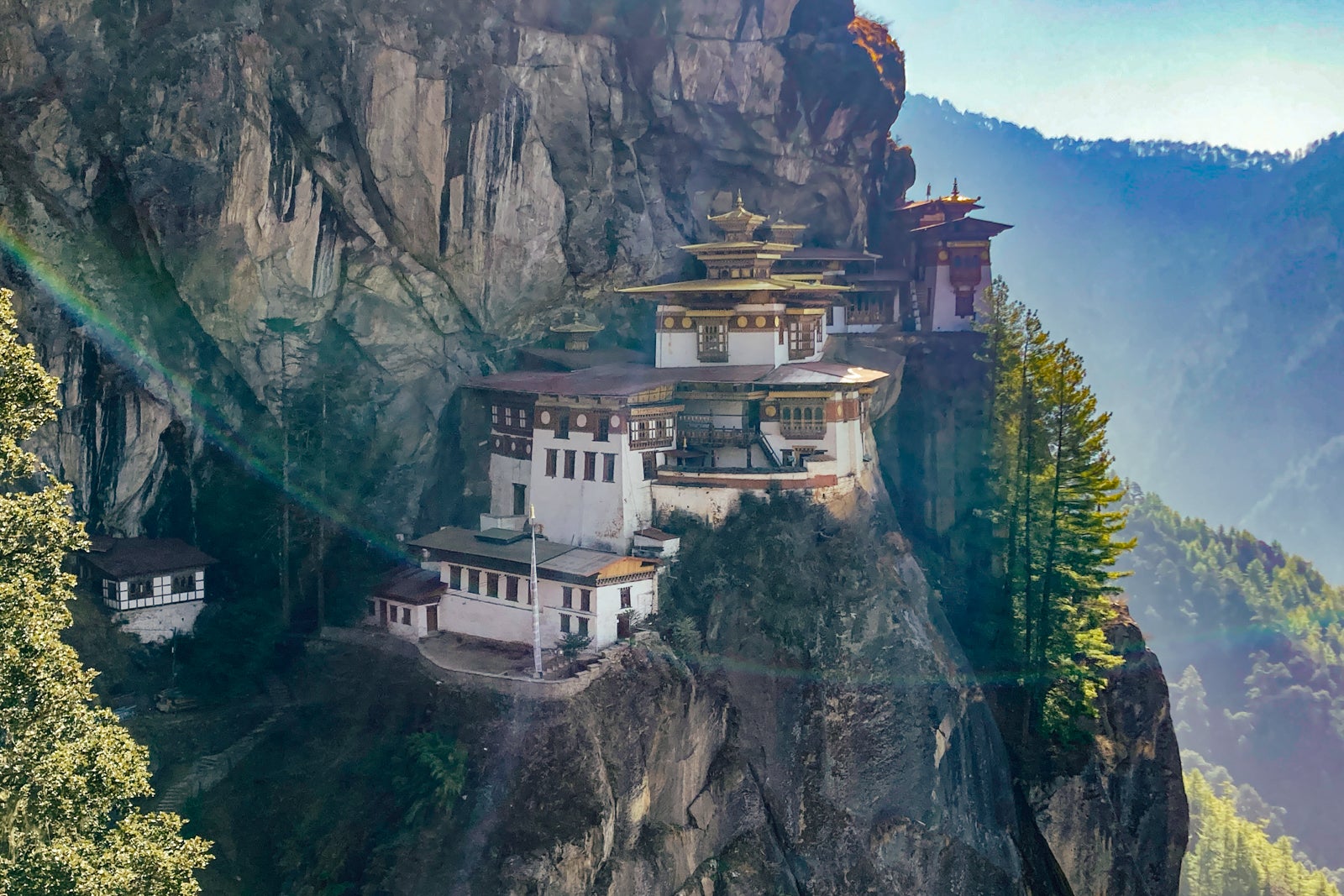
Hikers should begin when the ticket booth opens at 8 a.m. to avoid hiking during the hottest part of the afternoon. Guides advise that visitors with moderate fitness ability can return to their hotels for a late lunch, while those who move slower or take many breaks will need longer to see the site and can expect to return to their hotels at dinner time.
Determining whether to hire a guide
Is hiring a guide necessary for visiting Bhutan? In short, no.
Still, Bhutan's Department of Tourism says, "A guide is strongly recommended."
"Guides ... help look after the safety and security of the visitors, as there are wild animals in the countryside, and the altitude and landscape can sometimes pose unique challenges."
Though the Department of Tourism says guides don't need to accompany visitors for activities such as dining at restaurants and shopping, it's "recommended" that guides are employed "for experiences such as visiting temples and local places of interest, and it is mandatory to have a guide for all trekking activities and for any journeys that extend beyond Thimphu and Paro."
And, as mentioned earlier, visitors who enter Bhutan through land borders are required to have guides when leaving the border towns.
"If visitors follow the itineraries or journeys set by hotels," the Department of Tourism adds, "they will not need a guide as they will already have a guide who will be arranged by the hotel."
Based on this guidance, it's possible to visit Thimphu (the capital and largest city) and Paro (near the international airport) without a guide. Hiring a guide is recommended but not required in these areas, meaning you can find your own transportation and travel more independently. Beyond these areas, guides are mandatory.
If you don't hire a guide in Thimphu or Paro, ensure you have the phone number of your hotel with you at all times, as you will need to give this to go inside temples and at passport control when entering Bhutan.
The best time to visit Bhutan
Before September 2022, costs for the sustainable development fee fluctuated. Prices were higher during peak tourist times and lower during the offseason. Thus, traveling during the cold winters could lead to savings.
Now, the visa and sustainable development fee costs are the same throughout the year, meaning there's no longer a financial advantage to braving the Himalayan snowfalls and chilly winters.
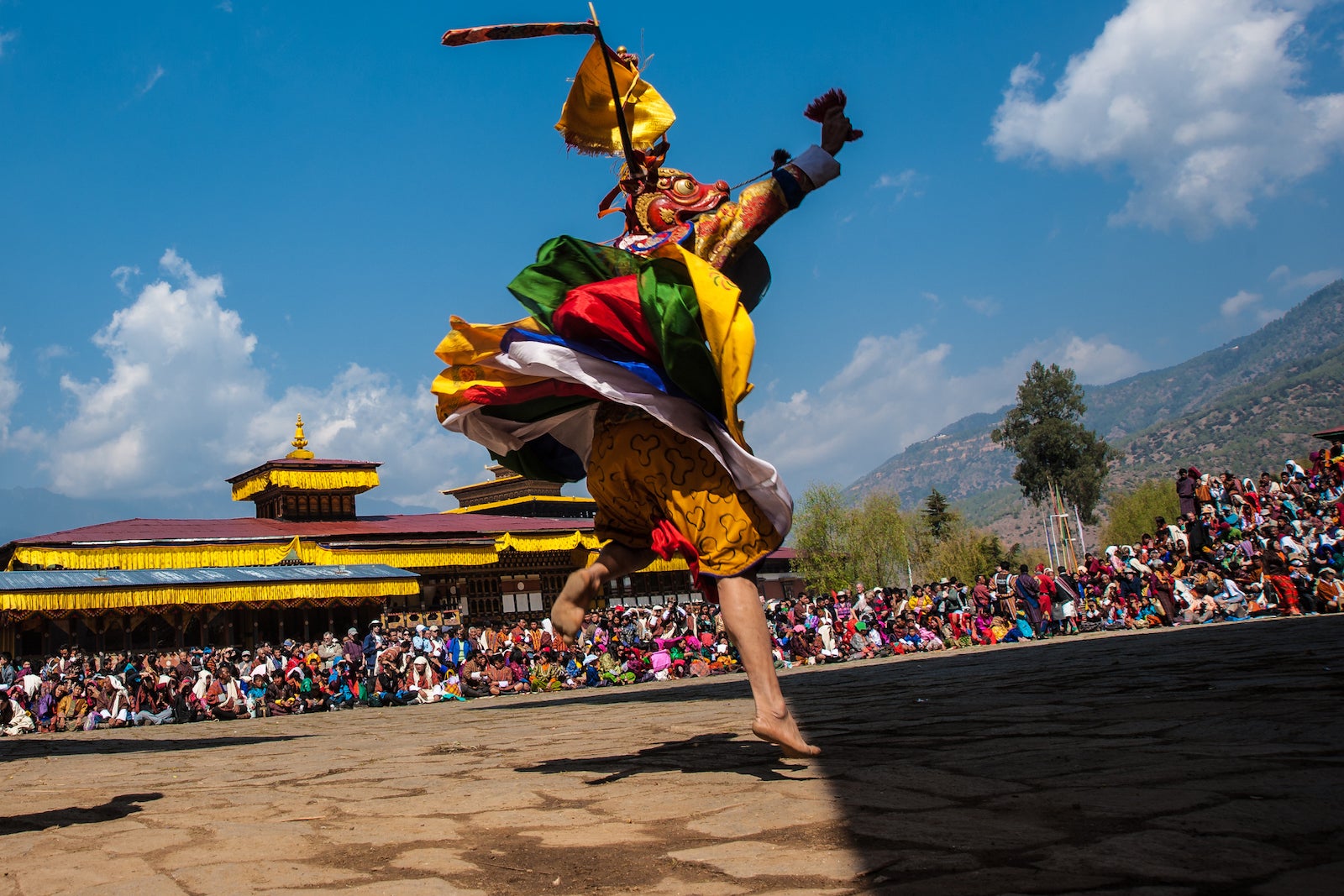
So, when should you visit Bhutan? Here's what to expect for each season in terms of trekking and festivals:
- Winter: It's possible to hike and trek throughout the year in Bhutan. Plan for low-altitude, shorter treks in winter to avoid snow and unpredictable weather at higher altitudes. Dec. 17 is National Day, which is tied to the coronation of the first king, Gongsar Ugyen Wangchuck, in 1907. On Jan. 2, you can attend the Nyilo festival, which celebrates the sun's return and is a traditional day of offering. February sees Losar, Bhutan's Lunar New Year festival, and birthday festivities for Bhutan's current (fifth) king, the Druk Gyalpo, on Feb. 21.
- Spring: Thanks to the abundant flora and fauna, spring is one of the best times for trekking in Bhutan. However, trails may still be wet from the recent snowmelt. In April or May, Zhabdrung Kuchoe celebrates the life of Zhabdrung Ngawang Namgyel, who unified Bhutan. May 2 also is a holiday: the birthday of Bhutan's third king.
- Summer: This is monsoon season. Treks are difficult and unpredictable but can provide great opportunities for reaching religious landmarks and ceremonies in Bhutan's less-visited regions. Several summer festivals have dates that change yearly based on the lunar calendar, including Lord Buddha's Parinirvana (the date Buddha attained enlightenment).
- Fall: Autumn is an ideal time for hiking through Bhutan's mountains. Trails begin to dry out and are at their best quality of the year, and the weather is excellent. Clear skies provide breathtaking views of the mountains. Near the end of September, Blessed Rainy Day celebrates the end of the rainy season and the autumn equinox. The Dashain festival in October is the most important holiday for the country's Hindus, as it's when believers celebrate Rama's victory over evil. Nov. 1 is the anniversary of the king's coronation, and Nov. 11 is the birthday of the fourth king. Additionally, Lhabab Duchen, which celebrates Buddha's descent from the heavens to Earth, happens every year in October or November.
Bhutan's many festivals are a highlight but also draw more tourists, making hotel rooms difficult to find. Plan ahead when visiting around these holidays, and be sure to check specific dates, as the dates for many holidays shift annually.
Getting around Bhutan
Unfortunately, tourists can't rent a car or drive in Bhutan. Public transportation is also lacking in many areas, though taxis are available for rides between Paro (including the international airport) and Thimphu (the capital).
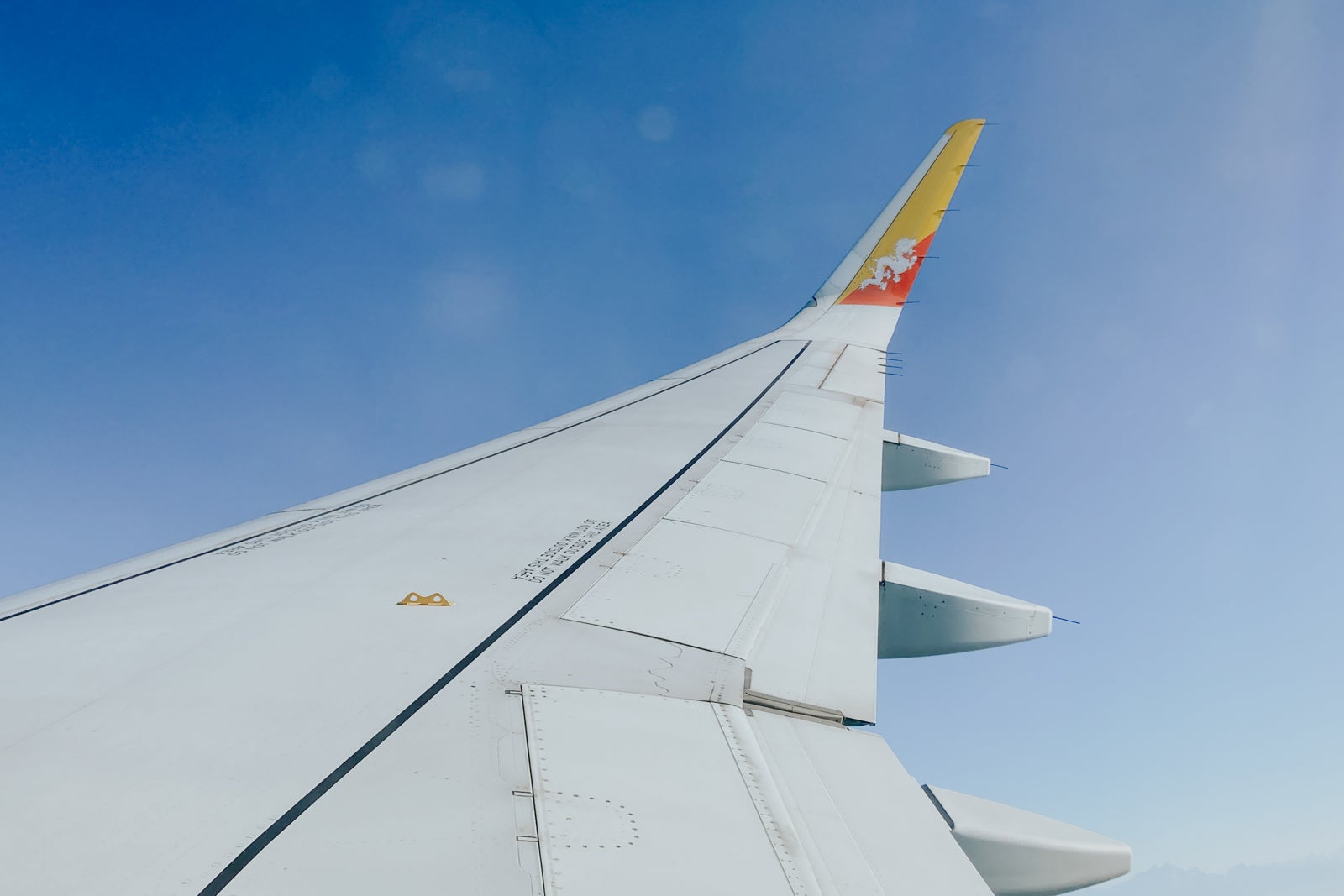
When you combine the transportation issues with the requirement for a guide when traveling beyond Paro and Thimphu, tourists who want to visit Bhutan independently won't have access to large portions of the country.
However, visitors with a guide will have a few options aside from driving. There are guided treks and cycling tours, as well as a limited number of domestic flights and helicopter charters.
The cost of traveling to Bhutan
When planning a trip to Bhutan, you'll need to consider multiple factors: flights, hotels, visas, meals, daily tourist fees, entrance charges for select attractions and tour guide services. Ultimately, though, the amount you spend will depend on how long you stay in the country, with each day costing at least $200 per adult before other details are accounted for.
One-way flights start around $115 per person and can climb to above $500 per person, depending on how far you're flying. While shorter distances lead to cheaper prices, don't forget to factor in the ease and cost of reaching those destinations. It may be easier (and therefore a better option overall) to transit through Bangkok or Singapore instead of Kathmandu or New Delhi.
Remember to look into visas for countries you fly to on the way to or from Bhutan as well, since some destinations require you to clear customs to check in for your next flight. This can add extra costs on top of the $40 visa fee and the $200 daily sustainable development fee Bhutan charges.
As for lodging, cash prices at Bhutan's hotels vary greatly depending on the property you choose. You could pay as little as $15 per night for basic accommodations or more than $1,500 per night at all-inclusive properties providing guests with meals, spa services and activities.
The advantage of booking hotels where meals are included — or where there's an on-site restaurant — is that you won't need to search for places to eat, carry cash to pay for food and arrange transportation to and from dining venues. Factor this into your decisions when budgeting for meals. If you decide to stay at a hotel where food isn't provided, expect to pay anywhere from $3 for fast food to $20 per dish at an upscale restaurant.
Many of Bhutan's monasteries, temples and museums require foreigners to pay admission, so be sure to factor visits to these attractions into your budget as well. You can find the entrance costs for popular sites here . Most entry fees will set you back about $13 per person.
Should you decide to hire a guide, expect to pay approximately $100 for a guided daytrip to regional temples and a hike to the Tiger's Nest; longer guided treks will be more expensive and should be negotiated in advance.
How to pay for trip expenses
It's possible to pay for flights, the sustainable development fee and visa applications online with a credit card. It's also possible to pay by card at larger, tourist-focused hotels — though you may incur a convenience fee for credit card payments.
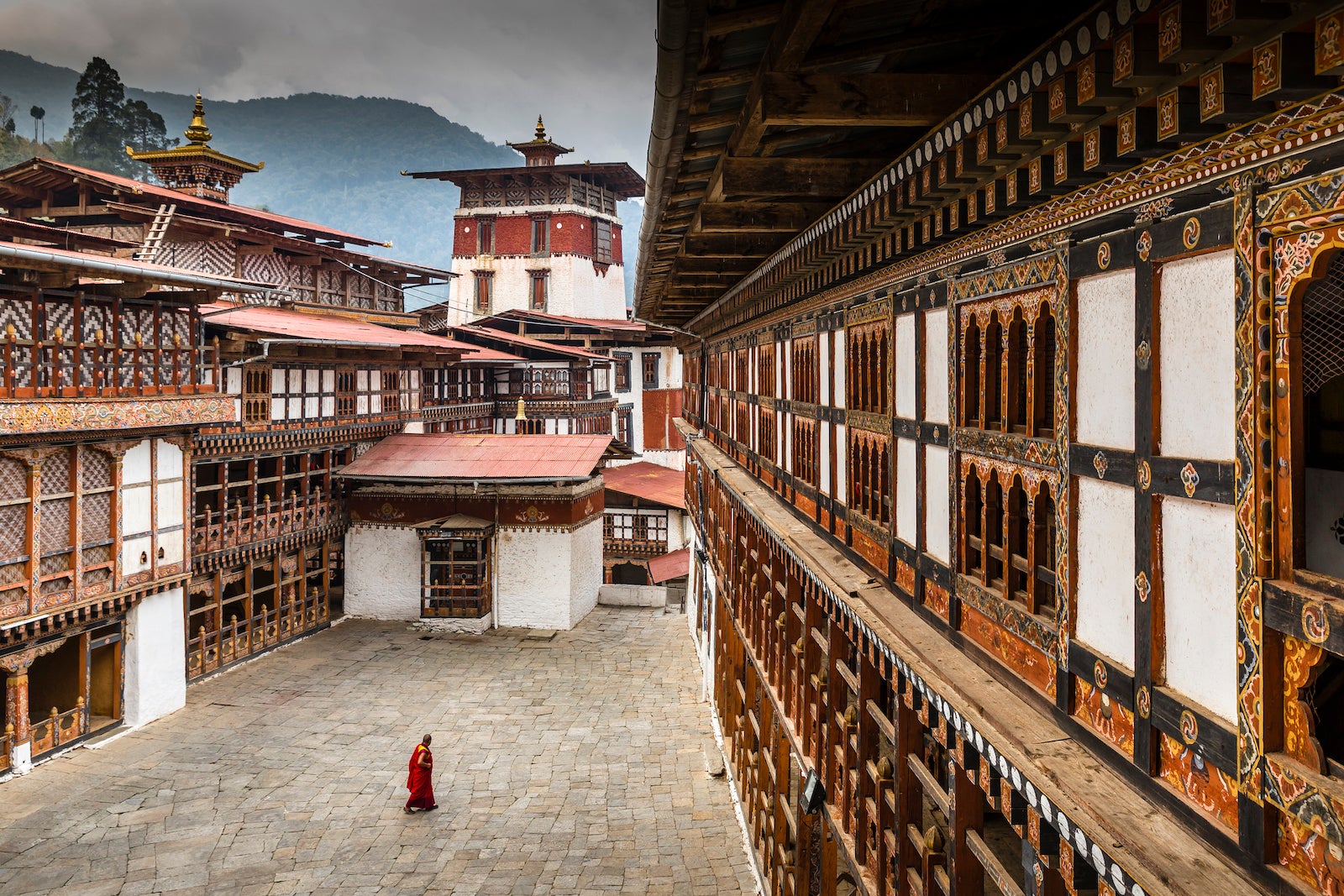
However, cash is required to pay entrance fees at attractions, buy food at local restaurants and hire a taxi. If you don't order currency before your trip, you can exchange foreign currency at the airport and most tourist-centric hotels, or withdraw money from an ATM in Paro's airport.
Additional tips for visiting Bhutan
Before you apply for your visa and pay the sustainable development fee, you should confirm your travel plans. That's because your visa will be issued for the exact dates of your trip — the dates you stated as your arrival and departure, backed up by tickets and hotel reservations. It will not be approved without these, and it will be issued only for the days you can prove you are visiting Bhutan.
Once you've decided on your dates, check flight schedules with Bhutan's two airlines for availability based on your proposed itinerary, as seats on flights to and from Bhutan fill up quickly. Some destinations are served multiple times a week (such as Delhi, with six flights per week), while others operate seasonally. After finding flights into, out of and within Bhutan, check these against flights from your home airport. You will need to fly to India, Thailand, Singapore or Nepal before your trip to Bhutan.
After confirming your flights, finalize any plans with a guide (if you're using one) and book your hotels. If you're using a guide for your entire trip, the guide can apply for your visa on your behalf and take a single payment covering everything other than flights, including hotels, meals, activities and the daily sustainable development fee.
Following the submission of all the required documents, you should receive your visa within a week of applying. Ensure the information is correct, then print this document. You'll need to show it when checking in for your flight to Bhutan and at passport control.

Getty Images/iStockphoto
Bhutan is no ordinary place. It's the last great Himalayan kingdom, shrouded in mystery and magic, where a traditional Buddhist culture carefully embraces global developments.
Best Time to Visit
Best places to visit, attractions, must-see attractions.

Trashi Chho Dzong
This splendid dzong, north of the city on the west bank of the Wang Chhu, dominates the valley, looking out over a cascade of terraced fields. It's…

Trongsa Dzong
This commanding dzong, high above the roaring Mangde Chhu, is perhaps the most spectacularly sited dzong in Bhutan, with a sheer drop to the south that…

Changangkha Lhakhang
This traditional Bhutanese temple perched like a fortress on a ridge above central Thimphu hums with pilgrim activity. It was established in the 12th…

National Textile Museum
Thimphu's best museum is part of the Royal Textile Academy. It features a stunning display of ancient and modern textiles, and explores the rich…

Simtokha Dzong
About 5km south of Thimphu on the old road to Paro and Phuentsholing, the handsomely proportioned Simtokha Dzong was built in 1629 by Zhabdrung Ngawang…

Tower of Trongsa Royal Heritage Museum
This watchtower (ta dzong) overlooking the dzong now houses an excellent museum. The five floors of displays tell the history of the monarchy through such…
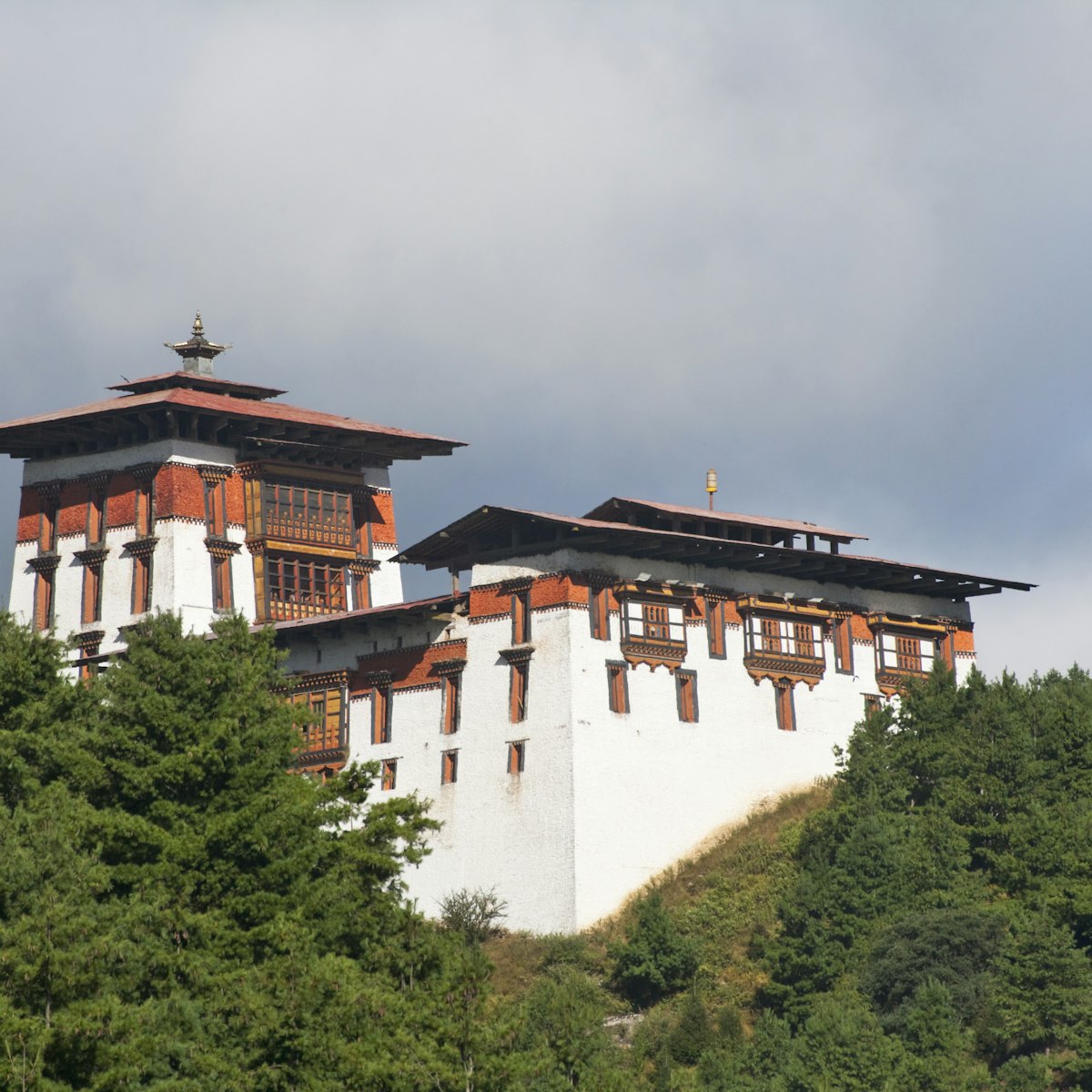
Jakar Dzong
Jakar Dzong is in a picturesque location overlooking the Chokhor valley; the current structure was built in 1667. Its official name is Yuelay Namgyal…

Weekend Market
Thimphu's Weekend Market fills a maze-like pavilion on the west bank of the Wang Chhu, just north of Changlimithang Stadium. Vendors from throughout the…
Planning Tools
Expert guidance to help you plan your trip.
Best Things to Do
Bhutan is an incredible country full of life-changing experiences. Here are 12 of our favorites that will ensure a trip you'll hold dear forever.
Things to Know
This quick guide navigates the cultural landscape, customs and quirks of the country known locally as Druk Yul, the Land of the Thunder Dragon.
Transportation
Find your way around the fascinating Kingdom of Bhutan with our guide to your transportation options.
Visa Requirements
Almost certainly yes. And you’ll need to make many more arrangements prior to your trip to Bhutan, too.
Money and Costs
These top tips along with a guide to daily costs can help you plan your budget for a visit to Bhutan.
Traveling with Kids
In Bhutan, a country that values happiness above everything else, children are welcomed with open arms. Plan your family trip with our guide.
Best Road Trips
Any road trip through the beautiful Himalayan valleys of Bhutan ranks as one of travel’s most exciting adventures. Here are five of the best.
Latest stories from Bhutan
Filter by interest:
- All Interests
- Adventure Travel
- Art & Culture
- Beaches, Coasts & Islands
- Food & Drink

Destination Practicalities
Feb 2, 2024 • 15 min read

Jan 28, 2024 • 7 min read

Jan 22, 2024 • 9 min read

Jan 17, 2024 • 6 min read

Jan 16, 2024 • 9 min read

Jan 16, 2024 • 5 min read

Jan 14, 2024 • 8 min read
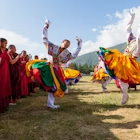
Jan 3, 2024 • 5 min read

Dec 29, 2023 • 5 min read

Dec 20, 2023 • 7 min read
in partnership with getyourguide
Book popular activities in Bhutan
Bhutan and beyond.

Ministry of Foreign Affairs and External Trade RGOB
Department of tourism.
Tourism sector in Bhutan was started in 1974 as a source revenue and promote unique Bhutanese culture and tradition rich natural environment. Over the years Bhutan is regarded as the most exclusive travel destinations in the world for its authenticity, remoteness and a well-protected cultural heritage and natural environment. Since the inception the Royal Government of Bhutan followed policy of ‘High Value, Low Volume’
Toursim Council of Bhutan ( https://bhutan.travel/ )
- Covid-19-Website
- Ministry of Health-Website
- Covid-19 Vaccination Registration Forms for Bhutanese Living Abroad
- Share full article
Advertisement
Famous for Happiness, and Limits on Tourism, Bhutan Will Triple Fees to Visit
As Venice and other European hot spots explore permit systems and daily fees to limit the number of tourists, the tiny Buddhist kingdom will require a $200 tax on international visitors when it reopens this fall.

By Ceylan Yeginsu
- July 5, 2022
The tiny Buddhist kingdom of Bhutan on the eastern edge of the Himalayas, often referred to as “the last Shangri-La” for its abundance of natural beauty, sustainable development and rich cultural heritage, has long resisted the quick financial returns of mass tourism in favor of conservation. The approach is aligned with a cultural philosophy where the country’s wealth and prosperity is measured, through a national happiness index , as an alternative to the gross domestic product.
Since 1974, the year when foreigners were first permitted to visit Bhutan, the country has had a unique “high value, low volume” tourism policy , requiring international visitors to pay at least a daily rate of $250 that covered accommodations, meals, a mandatory tour guide and included a $65 “sustainable development fee” to the government. The package-like approach was aimed to preserve the natural resources of the country by limiting the number of international visitors and controlling where they went. While some tourists complained of poor hotel plumbing, slow internet access and bland food, many appreciated the ease of the predetermined tours.
Now as the government of Bhutan prepares to reopen its borders on Sept. 23, it has overhauled the tourism system and will significantly raise the cost to visit. Visitors no longer need to be on a package tour, but they will now have to pay a $200 daily fee directly to the government, and pay separately for their accommodation, meals, tours and other travel expenses. The new policy, officials say, will rebrand Bhutan as “an exclusive destination,” attracting “discerning tourists” who will have access to a wider range of higher-quality services.
“Covid-19 has allowed us to reset, to rethink how the sector can be best structured and operated, so that it not only benefits Bhutan economically, but socially as well, while keeping carbon footprints low,” said Dr. Tandi Dorji, Bhutan’s foreign minister and chairman of the Tourism Council of Bhutan. “In the long run, our goal is to create high-value experiences for visitors, and well-paying and professional jobs for our citizens. ”
But many tour operators express anxiety over the change. They are worried that the new structure will leave them without any business — uncertain whether they will be able to attract a sufficient number of tourists with the higher fee, or if tourists will even require their services at all, now that they will have the option to book directly through hotels, tour guides and the like.
“Just when we thought we were seeing the light at the end of the tunnel after two-and-a-half years of being out of business, the government’s tourism amendment bill has thrown us back in the darkness and we have no idea how to go about it,” said Pelden Dorji, the chief executive officer of the Bhutan Travel Club, a company that specializes in adventure travel experiences.
Mr. Dorji has already received cancellations from groups that had booked, but not paid for, packaged trips they had scheduled later in the year. He said the group members felt that they could not justify paying an additional $200 a day on top of the other expenses that had been agreed upon as part of the previous package deal.
‘Deep love and respect for nature’
Under the previous policy, all bookings and payments had to be made through registered local tour operators, who were required to organize a prearranged itinerary with fixed dates and overnight stops.
“It’s basically a package tour that lets you see an authentic, untouched corner of paradise while protecting itself from being invaded by tourists,” said Megan Petersen, 44, a London-based makeup artist who visited Bhutan in 2017. “It’s genius and places with overtourism problems should use the same model.”
Ms. Petersen spent eight days exploring Bhutan with her sister, trekking through forests and mountain meadows, hiking to cliff-side temples and meeting local communities in remote villages. Throughout their trip, they camped and stayed in basic three-star accommodations. Everything was included in their package.
“The lodges and food were pretty average, but that just added to the experience of being able to experience the real community and culture without the fake tourist treatment,” Ms. Petersen said. “What makes Bhutan so special is the kindness and spirituality of its people and their deep love and respect for nature and their land.”
Government officials say the previous policy discouraged additional out-of-pocket spending, as many travel agents would assemble their trip activities, food and other offerings to not exceed the $250 daily rate — the practice effectively turned the policy’s minimum rate into the maximum.
“The policy caused more misunderstandings than understanding and it has resulted in lowering the services that we are potentially able to offer,” said Prime Minister Lotay Tshering.
Under the revised tourism bill, which was passed by the Bhutanese parliament last month, Bhutan will be able to reinvest “in bringing up the quality of tourism products, especially in terms of training our guides, bettering the quality of our hotels, restaurants and food, while preserving the pristine environment that we have for generations to come,” the prime minister said.
One of the government’s main priorities, Dr. Tshering said, is to invest in waste management infrastructure and protect Bhutan’s biological corridors, nature parks and main cultural assets. Bhutan’s constitution mandates that 60 percent of the country’s land must be under forest cover and maintains strict laws to protect and uphold its carbon-negative status.
“This all costs money,” Dr. Tshering said.
‘Why fix something that is not broken?’
While Bhutanese travel representatives had expected some reforms to the country’s tourism policy, the threefold increase to the government’s sustainability tax came as a shock, with many fearing that the new model will turn tourists toward cheaper destinations at a time when the country is desperate for tourism dollars to boost its post-pandemic recovery.
Tourism revenue is a key contributor to Bhutan’s economy, making up 6 percent of the country’s gross domestic product. Some 29,000 tourists visited Bhutan in 2020 before the borders were shuttered in March of that year, and generated a revenue of $19 million. In 2019, 315,599 tourists visited, earning the tourism industry $225 million, according to the Tourism Council of Bhutan. The kingdom eased its travel restrictions earlier this year, allowing in foreign visitors on a case-by-case basis and requiring them to quarantine.
Tourism operators argue that the minimum package framework incentivized tourists by including all essential services.
“Everyone is asking, ‘why fix something that is not broken?’” said Lotay Rinchen, co-founder of the tourism company Bridge To Bhutan, Bespoke Mindful Journeys . It “protected the travel industry and ensured a certain level of quality and business,” he said of the prior system.
Mr. Rinchen was always in favor of increasing the price of the minimum fee. But without the requirement of the package structure, he says he anticipates the Bhutan brand will be harder to sell. He has started to explore the possibility of offering luxurious products to lure in tourists willing to pay the higher costs, like chic boutique lodges, wellness retreats and upscale glamping. Previously tourists could pay extra for high-end hotels like the Taj Tashi and Le Meridien Thimphu , but many chose the basic options included in the minimum daily fee package.
“This is not the right timing. Bhutan’s economy is in bad shape, and we had expected to open up tourism and start earning hard currency again, but this price hike will keep tourists away,” said Mr. Dorji of the Bhutan Travel Club, adding that the new model could attract a demographic of older sightseeing tourists who would “skim from one luxury hotel to another, without experiencing the Bhutanese way of life.”
The prime minister said that was not the government’s intention. “We want to make sure that we get a set of tourists who are intellectually high-standing, knowledgeable and conscious of our needs and unique features,” he said.
Elsa Foster, 44, an American personal trainer who lives in Scotland, took a mountain biking tour in Bhutan with a group of friends in 2018. After a day of sightseeing in Bhutan’s capital, Thimphu, they embarked on a seven-day off-roading adventure, cycling through remote mountain valleys and villages. Ms. Foster said it was very practical to have hotels booked by their tour agent as they stayed in a different location each night.
“I really liked how everything was organized and packaged with the old fee system, all you had to do was show up,” she said. “But to pay 200 bucks on top of all the other expenses, you’ve got to be pretty rich and it’s a shame that Bhutan will become inaccessible to young people who won’t be able to afford it.”
The government hopes the new policy will have the opposite effect, attracting a wider demographic. “All we mean is to welcome with a very open heart all individuals and potential visitors who want to visit and experience the uniqueness we have to offer,” Dr. Tshering said. “Then we will ensure that the visitor will get the value of the money that is spent in Bhutan.”
The United States was one of the top tourism markets for the kingdom before the pandemic, behind India and Bangladesh, with 13,016 Americans visiting in 2019 and spending an average of 10 nights, according to the Tourism Council of Bhutan.
Karma Tshering, an environmental conservation and ecotourism specialist, said the government should use the increased tourism tax to meet its sustainability goals, which could include investing in hiking trails, highway amenities and training and support to service providers.
He is worried that without the minimum-spend policy, “which helps our service providers obtain minimum revenue to support their services, our people will be left in the hands of the tourists to negotiate and bring down prices,” Mr. Tshering said, adding that there could be “a chain impact on delivering quality services and high-end experiences.”
Some sectors see an opportunity in the change. Sonam Wangchuk, chairman of the Hotel & Restaurant Association of Bhutan, said the amendment was long overdue and will bring positive change where all hotels and restaurants will have equal opportunity.
“I guess it is now the survival of the fittest, where one now needs to pull up their socks and become a go-getter,” he said. “The old days of business knocking at your door are gone, therefore the harder we work the more promising it will be.”
Chencho Dema contributed reporting from Kansas City, Mo.

52 Places for a Changed World
The 2022 list highlights places around the globe where travelers can be part of the solution.
Follow New York Times Travel on Instagram , Twitter and Facebook . And sign up for our weekly Travel Dispatch newsletter to receive expert tips on traveling smarter and inspiration for your next vacation.
Ceylan Yeginsu is a travel reporter. She was previously a correspondent for the International desk in Britain and Turkey, covering politics; social justice; the migrant crisis; the Kurdish conflict, and the rise of Islamic State extremism in Syria and the region. More about Ceylan Yeginsu
Open Up Your World
Considering a trip, or just some armchair traveling here are some ideas..
52 Places: Why do we travel? For food, culture, adventure, natural beauty? Our 2024 list has all those elements, and more .
Provincetown, Mass.: Located at the tip of Cape Cod, P-town (as locals call it) has overlapping — and sometimes competing — identities : one of America’s oldest art colonies, nature preserve, thriving L.G.B.T.Q. resort and historic Portuguese fishing village.
Lake Como, Italy: Stars like George Clooney frequent this scenic corner of northern Italy, but you might be surprised by how affordable it can be. Here’s an insider’s guide .
South of France: Horses, bulls and birds of all types live among the pink marshes of the Camargue, a rugged landscape shaped by the relentless push and pull of sea and river.
Disney Theme Parks: As Disney has raised the cost of tickets and hotel rooms at its theme parks, and added pricey, difficult-to-navigate tools, even its most loyal fans are asking themselves if they should rethink their vacations.
Helsinki, Finland: Explore the stunning architecture of the new central library, browse treasure-filled shops in the Design District, sweat in a wood-burning sauna, sip cocktails on a schooner and trek across islands in the surrounding archipelago.
Top 10 Places to Visit in Bhutan in October

Bhutan, a kingdom nestled in the Eastern Himalayas, is a paradise for nature lovers, spiritual seekers, and cultural enthusiasts. October is a particularly enchanting time to visit Bhutan, as the country is draped in autumnal hues, the air is crisp, and the skies are clear, offering breathtaking views of the snow-capped peaks. Whether you’re looking to immerse yourself in Bhutanese culture, explore stunning landscapes, or simply relax in a serene environment, Bhutan in October offers it all. Here’s a guide to the top 10 places you shouldn’t miss during your visit.
Table of Contents
Experience for visit Bhutan in October:
Thimphu – the heart of bhutan:.

Thimphu, the capital city of Bhutan, is the perfect blend of tradition and modernity. October in Thimphu is characterized by pleasant weather, making it ideal for exploring the city’s rich cultural heritage.
Must-Visit Attractions:
- Tashichho Dzong : This impressive fortress-monastery is the seat of the government and is a symbol of Bhutan’s architectural prowess. The dzong is beautifully lit in the evening, offering a mesmerizing view.
- Buddha Dordenma : A gigantic statue of Shakyamuni Buddha that overlooks the city, the Buddha Dordenma is a must-visit for its spiritual significance and panoramic views of the Thimphu Valley.
- National Memorial Chorten : This stupa is a hub of spiritual activity, with locals circumambulating the chorten in prayer. It’s a peaceful place to soak in the spiritual atmosphere of Bhutan.
- Weekend Market : Experience the local lifestyle by visiting Thimphu’s weekend market. You can buy traditional Bhutanese handicrafts, fresh produce, and even sample local delicacies.
October Highlights:
October in Thimphu also coincides with the Thimphu Tshechu, one of the biggest religious festivals in Bhutan. The festival features colorful masked dances, religious performances, and a gathering of locals dressed in their finest traditional attire.
Read more articles about Bhutan:
- 10 Most Famous Buddhist Sites in Bhutan
- Top 10 Famous Monasteries in Bhutan
- Bhutan Celebrates 50 Years of Tourism
- Discover the Perfect Season: Best Time to Visit Bhutan
- Bhutan Eases Travel by Removing Mandatory
- Secrets: Why Bhutan Is Considered the Happiest
- Top 10 Adventure Activities in Bhutan
- How to Plan a Trip to Bhutan from Kolkata?
- Bhutan-India Railway Link: A New Era of Connectivity
Paro – Gateway to the Kingdom:

Paro is home to Bhutan’s only international airport and is often the first stop for travelers. This picturesque valley is rich in history and culture, with many sacred sites and historical monuments.
- Taktsang Monastery (Tiger’s Nest) : Perhaps the most iconic landmark in Bhutan, this monastery is perched on a cliff 900 meters above the Paro Valley. The trek to Tiger’s Nest is challenging but rewarding, with stunning views along the way.
- Rinpung Dzong : Also known as the “Fortress on a Heap of Jewels,” Rinpung Dzong is a fine example of Bhutanese architecture. It serves as a monastery and an administrative center and is particularly beautiful during sunset.
- Kyichu Lhakhang : One of the oldest and most sacred temples in Bhutan, Kyichu Lhakhang is a serene place for reflection and prayer.
- National Museum of Bhutan : Housed in the Ta Dzong, the museum offers a fascinating insight into Bhutanese culture and history.
In October, the Paro Valley is at its most beautiful, with rice fields ready for harvest, painting the landscape in shades of gold. The weather is perfect for trekking and exploring the outdoor sites that Paro is famous for.
- 15 Things to do in Bhutan: A Kingdom of Enchantment
- Affordable Bhutan Travel: Save More with Extended
- Bhutan to host world’s toughest ultramarathon, Snowman Race
Punakha – The Ancient Capital:

Punakha, the former capital of Bhutan, is known for its stunning dzongs and picturesque landscapes. Located at a lower elevation than Thimphu and Paro, Punakha enjoys a warmer climate, making it a perfect destination in October.
- Punakha Dzong : Considered the most beautiful dzong in Bhutan, Punakha Dzong is strategically located at the confluence of the Pho Chhu and Mo Chhu rivers. The dzong is surrounded by lush jacaranda trees that bloom in October, adding to its charm.
- Chimi Lhakhang : Also known as the Temple of Fertility, Chimi Lhakhang is a popular pilgrimage site, especially for couples seeking blessings for fertility. The walk to the temple takes you through picturesque paddy fields and traditional villages.
- Khamsum Yulley Namgyal Chorten : This beautiful stupa is a short hike from the Punakha Valley and offers stunning views of the surrounding countryside.
Punakha’s rice harvest season occurs in October, and the terraced fields turn golden, creating a postcard-perfect setting. The valley is also a haven for birdwatchers, with many species migrating to the area during this time.
- 2 Nights 3 Days Bhutan Itinerary
- Bhutan 5 Nights 6 Days Package
- 4 Nights 5 Days Trip to Bhutan
- 7 Days Bhutan Tour Package
- Bhutan Package for 8 Days
- 9 Days Bhutan & Nepal Trip
Bumthang – The Spiritual Heartland:

Bumthang, often referred to as the spiritual heartland of Bhutan, is a region of high valleys, sacred sites, and ancient monasteries. October is one of the best times to visit Bumthang, as the weather is cool and the skies are clear.
- Jakar Dzong : Known as the “Castle of the White Bird,” Jakar Dzong offers stunning views of the Bumthang Valley and is an important administrative and religious center.
- Kurjey Lhakhang : This sacred temple complex is believed to house the remains of the first three kings of Bhutan. It’s one of the most important pilgrimage sites in the country.
- Tamshing Lhakhang : Founded by the great saint Pema Lingpa, this monastery is renowned for its ancient murals and sacred relics.
- Mebar Tsho (Burning Lake) : A sacred lake revered for its connection to the great treasure hunter, Pema Lingpa. The lake is a popular spot for meditation and reflection.
October in Bumthang is marked by the Jambay Lhakhang Drup, a religious festival that features the famous fire dance, masked dances, and other cultural performances. The festival is a unique opportunity to witness the rich spiritual traditions of Bhutan.
Phobjikha Valley – The Valley of Black-Necked Cranes:

Phobjikha Valley is a glacial valley on the western slopes of the Black Mountains and is one of the most important wildlife reserves in Bhutan. It’s particularly famous for the black-necked cranes that migrate to the valley in October.
- Gangtey Monastery : Perched on a hilltop overlooking the Phobjikha Valley, Gangtey Monastery is an important Buddhist center and offers stunning views of the valley.
- Black-Necked Crane Information Centre : Learn about the conservation efforts to protect the endangered black-necked cranes and observe these majestic birds in their natural habitat.
- Nature Trails : Phobjikha Valley offers several nature trails that allow you to explore the valley’s unique ecosystem and enjoy the tranquility of the surroundings.
The arrival of the black-necked cranes in October is a significant event in Phobjikha Valley. The cranes are considered sacred, and their arrival is celebrated with the Black-Necked Crane Festival, which includes cultural performances and traditional songs dedicated to these birds.
Haa Valley – Bhutan’s Hidden Gem:

Haa Valley is one of the least-visited regions in Bhutan, making it a perfect destination for those seeking solitude and untouched natural beauty. October is an ideal time to visit Haa, as the valley is bathed in the warm colors of autumn.
- Lhakhang Karpo and Lhakhang Nagpo : These two ancient temples, known as the White Temple and Black Temple, are steeped in mythology and are key religious sites in the Haa Valley.
- Chele La Pass : The highest motorable pass in Bhutan, Chele La offers panoramic views of the Himalayan peaks, including Mount Jomolhari. The pass is especially stunning in October when the surrounding forests are ablaze with autumn colors.
- Haa Summer Festival : Although not in October, the Haa Summer Festival is worth mentioning for its cultural significance. It showcases the unique traditions, cuisine, and lifestyle of the Haa region.
Haa Valley is relatively unexplored, so you’ll find fewer tourists here, allowing you to experience the serenity and natural beauty of Bhutan in its purest form. The valley is also a great place for trekking, with trails that offer spectacular views of the surrounding mountains.
- Wangdue phodrang
Trongsa – The Ancestral Home of Bhutan’s Royal Family:

Trongsa is located in central Bhutan and is often considered the geographic center of the country. It’s historically significant as the ancestral home of Bhutan’s royal family and offers a glimpse into the country’s past.
- Trongsa Dzong : One of the largest and most impressive dzongs in Bhutan, Trongsa Dzong is a labyrinth of courtyards, passageways, and temples. It’s strategically located on a ridge overlooking the Mangde River and offers stunning views of the surrounding mountains.
- Ta Dzong : Originally a watchtower, Ta Dzong has been converted into a museum that chronicles the history of Bhutan’s monarchy and the Trongsa Dzong itself.
- Chendebji Chorten : This stupa, modeled after the Swayambhunath in Kathmandu, is located on the way to Trongsa and is a peaceful place for a short stop and reflection.
Trongsa’s weather in October is cool and pleasant, making it an ideal time to explore the dzongs and enjoy the scenic views of the valley. The historical significance of Trongsa adds depth to the experience, making it a must-visit destination for history enthusiasts and those interested in Bhutan’s royal heritage.
More Information on Bhutan:
- 16 Top Reasons to Visit Bhutan
- 20 Best Places to Visit in Bhutan 2024
- Bhutan’s 10 Best Places to Visit in April 2025
- 10 Best Places to Visit in March in Bhutan 2025
- 10 Most Famous Festivals Celebrated in Bhutan
- 10 Best Places to Visit in Bhutan in February
- Bhutan in January: Places to Visit and Things to Do
- Bhutan Famous Hill Stations to Visit
Lhuntse – The Land of Textiles and Tradition:

Lhuntse, located in northeastern Bhutan, is one of the most remote and least visited districts in the country. This isolation has helped preserve its unique cultural heritage, particularly its weaving traditions, which are considered the finest in Bhutan.
- Lhuntse Dzong : Perched on a hilltop overlooking the Kuri Chhu River, Lhuntse Dzong is a picturesque fortress that has stood the test of time. The dzong is an important cultural and religious site and offers panoramic views of the valley below.
- Khoma Village : Renowned for its intricate and beautiful kira (the national dress for women), Khoma Village is a must-visit for those interested in Bhutanese textiles. Here, you can watch master weavers at work and purchase handwoven textiles directly from the artisans.
- Singye Dzong : A sacred pilgrimage site, Singye Dzong is a remote cluster of temples and hermitages nestled in the mountains. The trek to Singye Dzong is challenging but rewarding, offering a profound spiritual experience.
October is one of the best times to visit Lhuntse as the weather is pleasant, and the countryside is awash with the colors of autumn. The district’s remoteness means you’ll encounter few tourists, allowing you to immerse yourself in the local culture and traditions.
- 7 Days Bhutan Tour Itinerary
- Bhutan Trip 5 Nights 6 Days
- 5 Days Bhutan Trip Package
- Bhutan Travel for 8 Days
- Click Bhutan More Itineraries
Mongar – Gateway to Eastern Bhutan:

Mongar is the gateway to eastern Bhutan, a region known for its dramatic landscapes and rich cultural heritage. The town of Mongar is built on a mountainside, and its winding roads and lush forests make it a scenic destination.
- Mongar Dzong : Unlike most dzongs in Bhutan, which are centuries old, Mongar Dzong was constructed in the 20th century. Despite its relatively recent construction, it follows the traditional architectural style and is an important administrative and religious center.
- Drametse Monastery : This monastery is one of the most important in eastern Bhutan and is the birthplace of the Drametse Ngacham, a masked dance that is part of Bhutan’s cultural heritage and is recognized by UNESCO.
- Lhuntse to Mongar Road : The journey from Lhuntse to Mongar is one of the most scenic drives in Bhutan. The road winds through forests, passes traditional villages, and offers breathtaking views of the mountains.
October is a great time to explore Mongar and the surrounding region, as the weather is clear and cool. The forests and valleys are particularly beautiful during this time, with the autumn foliage adding to the scenic beauty.
Samdrup Jongkhar – Bhutan’s Gateway to the East:

Samdrup Jongkhar is the gateway to eastern Bhutan and is the only town in Bhutan that borders the Indian state of Assam. This bustling town is a melting pot of cultures and serves as an important trade hub.
- Samdrup Jongkhar Dzong : Although it is a relatively new dzong, Samdrup Jongkhar Dzong follows traditional Bhutanese architecture and serves as an important administrative center.
- Dewathang : Located a short drive from Samdrup Jongkhar, Dewathang is a historically significant town where Bhutanese forces resisted British invasions in the 19th century. The town is also home to the Dewathang Gompa, a beautiful monastery that offers stunning views of the surrounding area.
- Indigenous Handicrafts and Market : Samdrup Jongkhar is known for its vibrant markets, where you can buy traditional Bhutanese handicrafts, textiles, and other local products. The town’s proximity to India means you’ll also find a unique blend of Bhutanese and Indian goods.
October is an ideal time to visit Samdrup Jongkhar, as the weather is comfortable for exploring the town and its surroundings. The town’s vibrant markets and rich history make it a fascinating destination for travelers looking to experience the cultural diversity of Bhutan.
Conclusion: Bhutan’s October Magic
October is a magical time to visit Bhutan. The autumnal colors, clear skies, and pleasant weather create the perfect conditions for exploring the country’s diverse landscapes and rich cultural heritage. From the spiritual heartland of Bumthang to the remote valleys of Lhuntse and the bustling gateway of Samdrup Jongkhar, Bhutan offers a wealth of experiences for every traveler.
Whether you’re trekking to the iconic Tiger’s Nest in Paro, witnessing the arrival of the black-necked cranes in Phobjikha Valley, or immersing yourself in the vibrant festivals of Thimphu and Bumthang, Bhutan in October promises an unforgettable journey. The country’s commitment to preserving its culture and environment, combined with the warmth and hospitality of its people, ensures that your visit will be both enriching and inspiring.
So pack your bags, and get ready to explore the Land of the Thunder Dragon in all its autumnal glory. Bhutan awaits, with its serene monasteries, majestic dzongs, and breathtaking landscapes, offering a journey that will stay with you long after you’ve left its enchanted borders.
About The Author
Editor Tusk Travel
Related posts.

Indians expected to pay more money to travel to Bhutan, starting this season

Bhutan Plans To End Free Trip For All Indian Passport Holders
Leave a comment cancel reply.
Your email address will not be published. Required fields are marked *
Save my name, email, and website in this browser for the next time I comment.
Renegades honor South Asian baseball hopefuls on 'Bhutan Night' at stadium

FISHKILL - With an awestruck expression, Ngawang Gyeltshen panned the field and the stands at Heritage Financial Park, capturing with his camera phone some tangible copies of the images that, he insisted, will remain forever in his memory.
Those pictures and videos were posted almost immediately to Facebook, allowing his family to get a glimpse of Dutchess County and professional baseball, and see some of what the 16-year-old called “the most fun experience of my life.”
Gyeltshen was among a dozen young athletes who traveled for the first time from Bhutan, making an 8,000-mile journey from South Asia to New York, where they were welcomed by the Hudson Valley Renegades.
“I would’ve never dreamed I would be standing here in a stadium like this,” 17-year-old Tenzin Dolkar said after joining the other Bhutanese teens in throwing out ceremonial first pitches Tuesday evening before the Renegades game. “This is amazing.”
So, too, is the sequence of events that brought them there.
New digs: Renegades christen renovated stadium with walkoff win before excited fans
Kicking it: How small Poughkeepsie youth soccer team reached Sweden's Gothia Cup
Bhutan is a small mountainous country nestled in the Himalayas, but there is a burgeoning baseball scene as the sport has quickly gained interest and a youth development league has boomed in recent years. A photo of kids in traditional gho robes playing baseball outside a Buddhist temple, with an accompanying MLB.com article, went viral last year and caught the attention of Renegades officials.
The idea was born to connect with the Bhutan Baseball & Softball Association and help fundraise for equipment and uniforms. But Renegades general manager Zach Betkowski ultimately went several steps further, inviting a few players and their chaperones to the United States.
“When they saw the field for the first time, it was a special moment and I got choked up,” Betkowski said, watching his long-distance plan come to fruition. “My eyes were sweating a little.”
Dutchess Tourism helped coordinate their itinerary for a busy first two days. Included was a tour of the Hudson Valley, with stops at the Dutchess County Fair and the Franklin D. Roosevelt Presidential Library and Museum, and baseball instruction from the Renegades. They'll later visit MLB headquarters in Manhattan and catch a Yankees game.
According to Melaine Rottkamp, the president of Dutchess Tourism who accompanied them on a tour of the area, the kids “care deeply about nature and the environment,” and they seemed to especially enjoy the fair. That, and tasting milkshakes for the first time.
“This is the most amazing week for baseball in Bhutan,” said Matt DeSantis, a Connecticut native who helped introduce the sport to kids there and is co-founder of the Bhutan Baseball & Softball Association. “Hearing the Bhutanese national anthem for the first time on an American baseball field was incredible.”
Just as exciting for the kids on Monday, following a baseball clinic, was taking batting practice with a simulator that replicated Shohei Ohtani’s pitches. The Los Angeles Dodgers superstar is their favorite MLB player, explained Joe Vasile, the Renegades’ director of public relations and broadcasting. After that, the youngsters demonstrated their would-be home run trots and a couple of them, acrobats, performed twirling somersaults while crossing home plate.
“I’ve never enjoyed myself (this) much,” Gyeltshen said Tuesday. “I’m thankful to everybody for this.”
As part of its “Bhutan Night,” the Renegades wore yellow Bhutanese-themed jerseys that featured artwork of the mythological Thunder Dragon, which is a national symbol. As the players were introduced to face the Wilmington Blue Rocks, they were accompanied onto the field by their special guests, who stood at attention as both nation’s anthems were played in succession.
DeSantis’ “full-circle” dream, and a bold prediction, is that there eventually will be a Bhutanese player who makes it onto the roster of the Yankees High-A affiliate.
Although technology is somewhat limited in Bhutan and the children’s first exposure to MLB was YouTube highlights, there is a great appreciation of the game and, DeSantis said, a natural aptitude among many of the athletes.
“They’re smart kids who’ve adjusted well to the physical aspect of the game, and they’re learning a lot of the strategies and nuances,” he said. “Plus, it’s such a mountainous place, they’re basically hiking all the time, so they’re in good shape and athletic.”
The group cheered enthusiastically as they were treated to a 10-0 win in one of the Renegades’ most impressive performances this season. Baron Stuart threw six no-hit innings as three pitchers combined for a one-hitter, and Hudson Valley scored seven runs in the first three innings. Brendan Jones walked three times and hit a two-run homer and George Lombard Jr. went 2 for 5 with two RBI.
The BBSA also was presented with a check for over $62,000 by the Renegades, who raised money for them through merchandise sales and donations. That money, DeSantis said, will go toward supporting the league, which now trains more than 6,000 kids and is quickly expanding.
Calling long distance
This plan was put in motion last winter as both parties organized while four continents apart. For DeSantis and league president Karma Dorji, the first hurdle was “a difficult selection process” in choosing which 12 kids would get to make the trip. Accomplishments on the field and academics were factored. The U.S. Embassy in New Delhi helped the group acquire visas to travel.
None of the children had left their country before and it would be their first time on an airplane. They took a short connecting flight to India, then flew nonstop for almost 16 hours to Queens.
“I was a little nervous up there in the plane, but it was fun,” said Dolkar, a high school junior and a standout catcher for the developmental softball team. “Then when we got here and saw all the things we have so far, it made (the trip) much better. I feel very lucky.”
DeSantis grew up in a baseball-centric family that included four brothers who immersed themselves in the sport. His mother, Marie, and younger brother, Will, attended the game Tuesday. As a child, Matt organized a community baseball league and invited neighbors to play in the backyard of their Wilton home. So, it came as little surprise to relatives, Will DeSantis said, that he would spearhead a league in Bhutan.
Matt DeSantis, 39, attended Choate Rosemary Hall, a boarding school in Connecticut, where he was classmates with Jigyel Ugyen Wangchuck, the prince of Bhutan. Their friendship sparked his initial interest in the country and, he said, he fell in love with the region while vacationing there in 2010.
A computer programmer by trade, he moved there in 2013 to work with the Bhutan Olympic Committee. It was then he worked alongside Dorji to establish the youth baseball and softball league.
“When we started, the intention was for it to be a five-day program just teaching kids the basics,” he said. “But the sports culture is incredible there. Every week, we had more kids coming and it grew organically.”
Dzongkha is the native language of Bhutan, but English is commonly taught in the schools and each of the kids who visited spoke it fluently. It certainly helped in their feeling comfortable in America. That, and social media has made the world smaller. During the tour, a few TikTok videos were filmed and many of the kids are into hip-hop and Taylor Swift.
“My parents are leaving comments right away on everything I post,” Gyeltshen said with a grin. “They know we are enjoying ourselves here.”
Stephen Haynes: [email protected]; 845-437-4826; Twitter: @StephenHaynes4

COMMENTS
1. Independent travel is finally possible, but a tour operator is still the way to go. Since reopening in 2022, Bhutan has scrapped its all-inclusive tour-package minimum, and initially raised the Sustainable Daily Fee (SDF) to US$200 before reducing it to US$100, valid now through September 2027. There is a 50% discount for kids ages six to 11 ...
The number of tourists visiting Bhutan increased to 2,850 in 1992, and rose dramatically to 7,158 in 1999. [ 1] By the late 1980s tourism contributed over US$2 million in annual revenue. Though open to foreigners, the Bhutanese government is acutely aware of the environmental impact tourists can have on Bhutan's unique and virtually unspoiled ...
Welcome to Bhutan Travel | Kingdom of Bhutan. In a world that is always on the go, Bhutan provides sanctuary. Here, you can find earthly pleasures: archery and age-old crafts, dishes of home-made cheese and fearsomely hot chillies, breathtaking treks and restorative hot-stone baths. But there's another Bhutan, too - the one hinted at by the ...
5. Gangtey Valley. Best for outdoor activities. Drive past the mountainside yaks and into one of Bhutan's most sacred places. Tranquility and peace emanate from its main attraction, Gangtey Goemba, a 17th-century monastery overlooking the valley's farmland. But its Gangtey's natural beauty that really stands out.
Learn about the new tourism rules, costs and tips for traveling to Bhutan, a remote and exclusive Himalayan destination. Find out how to arrange a trip, what to see and do, and when to go to this Shangri-La country.
Travel in the country. The most convenient way to travel in Bhutan is to hire a vehicle and driver from a car rental company or a tourism service provider. It is not possible to hire a self-drive vehicle in Bhutan. You can also book a local driver or transport service provider (as well as hotels and tour operators).
The cost of travel in Bhutan is much more expensive than other Southeast Asian countries. Because the government requires that all incoming travelers must book a tour with a travel agency and set a minimum daily cost of US$200 per person during low season and US$250 during high season. General speaking, if you are planning for a comfortable ...
One of the best sights in the Punakha area is the bridge over the Pho Chu river, which is actually known as the longest suspension bridge in Bhutan! You can walk across the entire 200 meter bridge to the other side, and it has wonderful views of the valley and the turquoise glacier water of the Pho Chu river. Amazing views at the Pho Chu river ...
These rankings are informed by Tripadvisor data—we consider traveller reviews, ratings, number of page views, and user location. 2024. 1. Paro Taktsang. 3,362. Historic Sites. Challenging 3 km cliffside hike in Bhutan through lush forests with a mid-point café; culminates at a sacred cliff-perched monastery with panoramic views.
Nestled between India and Tibet, the small Himalayan kingdom of Bhutan has remained largely unnoticed by mainstream tourism for many years. Instead of embracing a tourism industry that might erode local culture to cater to foreign preferences, Bhutan has carefully designed its approach to tourism development, aiming to engage visitors in the rich tapestry of the country's culture and ...
Thriving Nature: Explore Bhutan's diverse ecosystems, spot rare birds in the lush forests, or embark on a wildlife safari to encounter the majestic national animal, the Takin. Sustainable Tourism: Bhutan prioritizes responsible tourism practices. The "High Value, Low Volume" policy ensures a pristine environment and allows for a more ...
Things to Do in Bhutan, Asia: See Tripadvisor's 66,519 traveler reviews and photos of Bhutan tourist attractions. Find what to do today or anytime in August. ... 10 Days Bhutan In-depth Culture & Nature Travel Experience. 4. Bus Tours. from . $3,470. per adult (price varies by group size) 12 Days Wonders of Bhutan With 3-Day Gangtey Nature Trek. 1.
The Royal Government of Bhutan defines ecotourism as "responsible travel to natural areas and habitats, which conserves the environment, respects the culture and traditions of its people, and improves the overall well-being of its citizens within the overall concept of Gross National Happiness.". To implement this, the national tourism ...
7. Hike up to the iconic Taktshang Goemba, the Tiger's Nest. The one excursion that every visitor to Bhutan has on their wish list is the half-day hike up through pine forests to Taksthang Goemba, the iconic Tiger's Nest Monastery, in the upper Paro Valley.The spectacular gold-roofed temple sticks miraculously to the side of a dramatic cliff and centers on a cave that Buddhist saint Guru ...
Welcome to The Kingdom of Bhutan and the Land of the Thunder Dragon, known for its unique philosophy of prioritising wellness and happiness over economic materialism and sustainability over tourism. In this ten-day Bhutan itinerary, we explore historic destinations, visit ancient monasteries, drive through pristine landscapes, soak in cultural ...
The Bhutan Tourist Corporation Limited (BTCL) is highly recommended for making travel bookings to Bhutan. This company is owned by members of the royal family and advertises itself as Bhutan's number one travel agency since 1991. The drivers, guides, and accommodations provided are excellent.
Photo by Gaurav Bagdi on Unsplash. Because of Bhutan's tourism policies citizens of countries other than India, Bangladesh and Maldives require to pre-arrange their tour of a minimum of $250 with a Bhutanese registered travel agency and obtain their hotel bookings and the visa their after.. You can arrange your Bhutan travel only through the tour agencies that are approved tour operators by ...
3. Punakha. 5.0 /5. 3 out of 26. Places to visit in Bhutan 11. Tourist attractions. Punakha is one of the 20 districts (dzongkhags) of Bhutan bordered by the Gasa, Wangdue Phodrang and Thimphu districts. Located at the height of 1200m above sea level, Punakha offers a mesmerising view of the Himalayas.
The festival tours of Bhutan are a magical spectacle, a special time for travellers to explore this extraordinary land of pure and exotic mysticism. Know More. Trekking in Bhutan is a truly an amazing experience. From the warmth and lush vegetation of the river valleys to the icy slopes of the eastern end of the Himalayas, one will encounter ...
While this approach was easy to maintain during the worst of the coronavirus pandemic, when Bhutan decided to fully close its borders to foreigners, after nearly two years, the country started welcoming visitors again Sept. 23, 2022. But with that reopening came an overhauled set of tourism rules.
Discover the best time, places and attractions to visit in Bhutan, the last great Himalayan kingdom. Explore its culture, nature, history and more with Lonely Planet's expert tips and advice.
Department of Tourism. Tourism sector in Bhutan was started in 1974 as a source revenue and promote unique Bhutanese culture and tradition rich natural environment. Over the years Bhutan is regarded as the most exclusive travel destinations in the world for its authenticity, remoteness and a well-protected cultural heritage and natural environment.
In 2019, 315,599 tourists visited, earning the tourism industry $225 million, according to the Tourism Council of Bhutan. The kingdom eased its travel restrictions earlier this year, allowing in ...
Bhutan, a kingdom nestled in the Eastern Himalayas, is a paradise for nature lovers, spiritual seekers, and cultural enthusiasts. October is a particularly enchanting time to visit Bhutan, as the country is draped in autumnal hues, the air is crisp, and the skies are clear, offering breathtaking views of the snow-capped peaks.
Bhutan is a small mountainous country nestled in the Himalayas, but there is a burgeoning baseball scene as the sport has quickly gained interest and a youth development league has boomed in ...